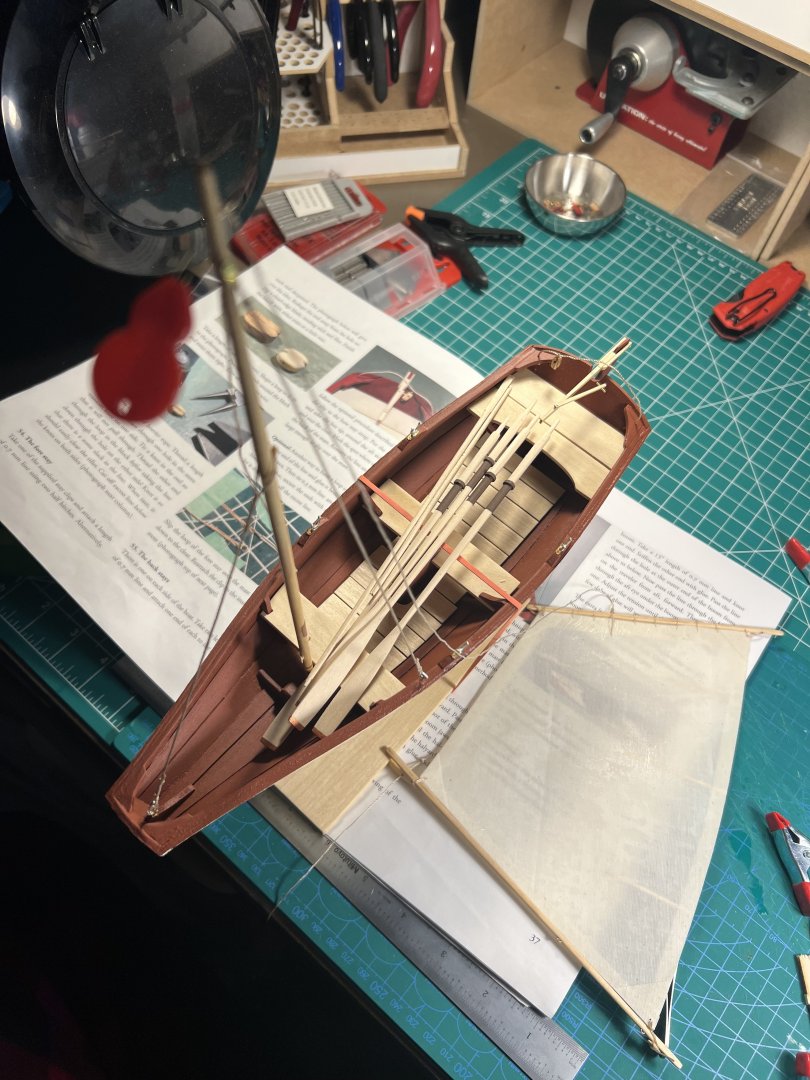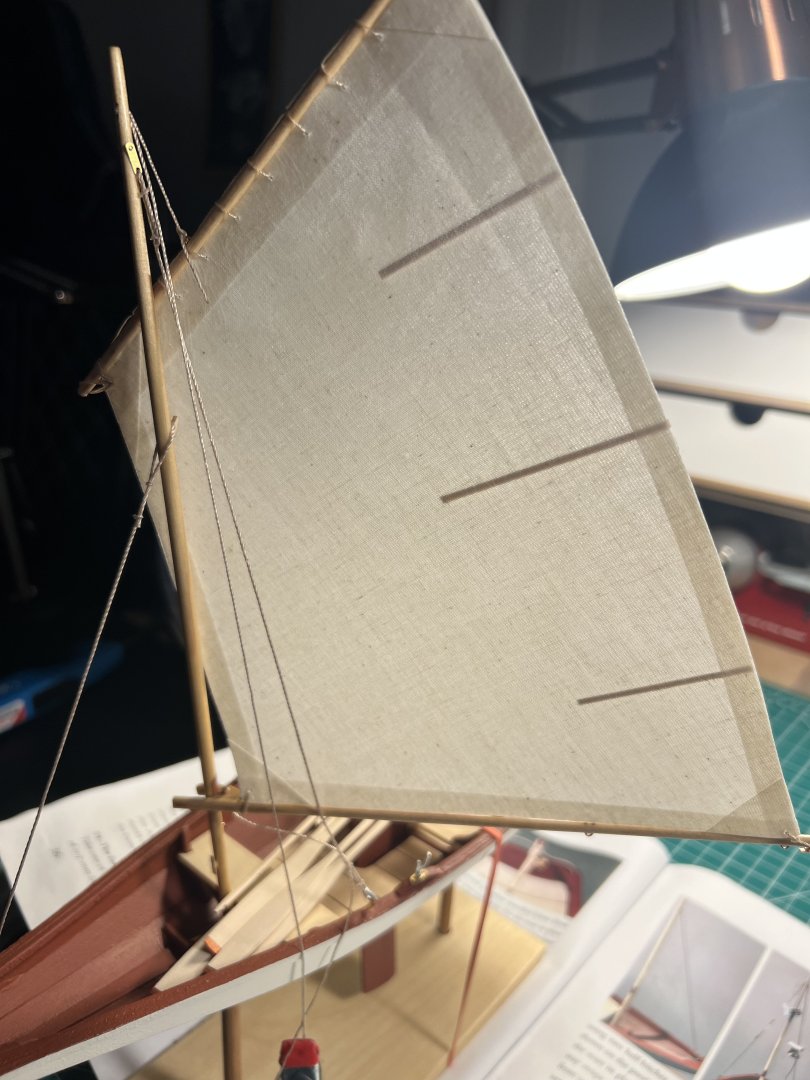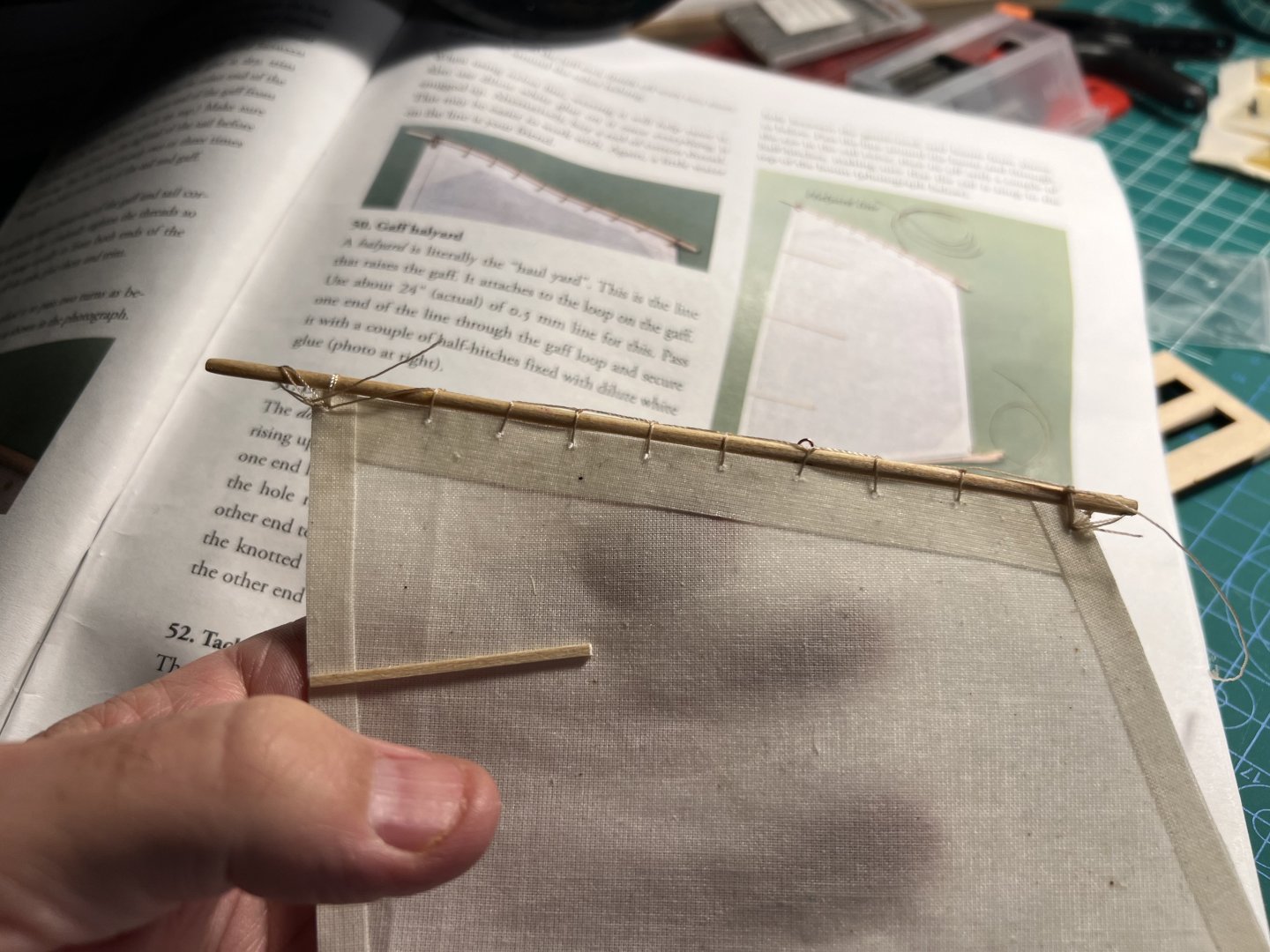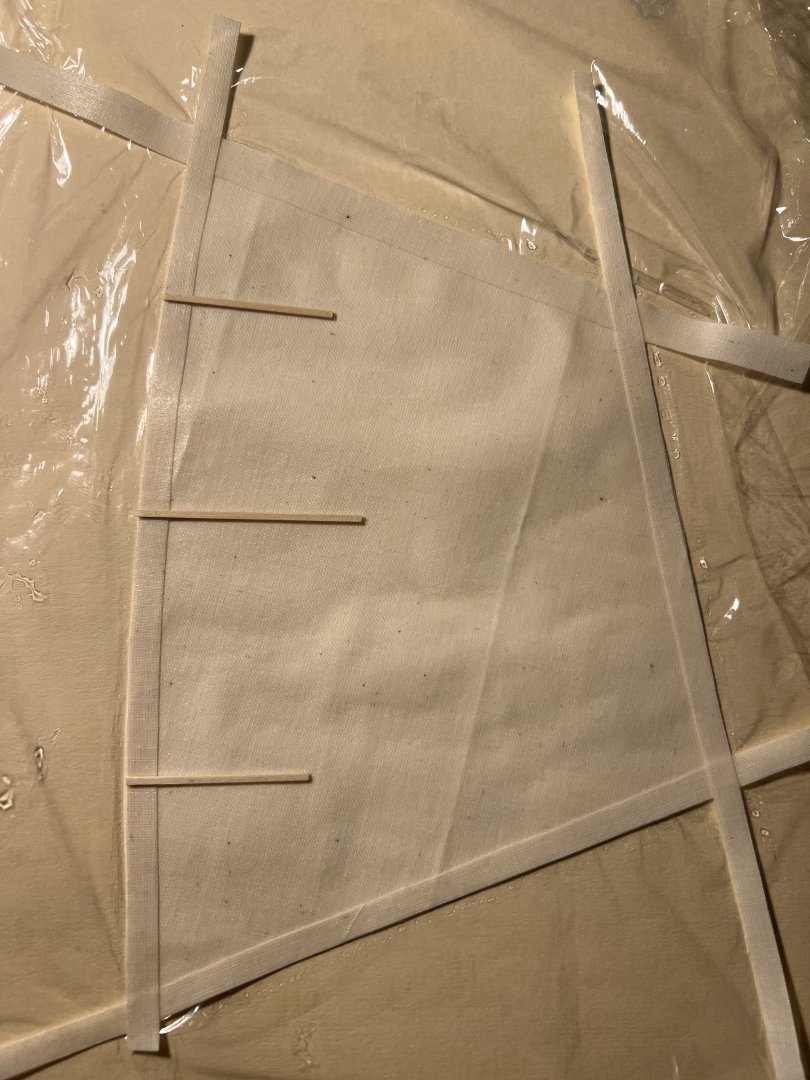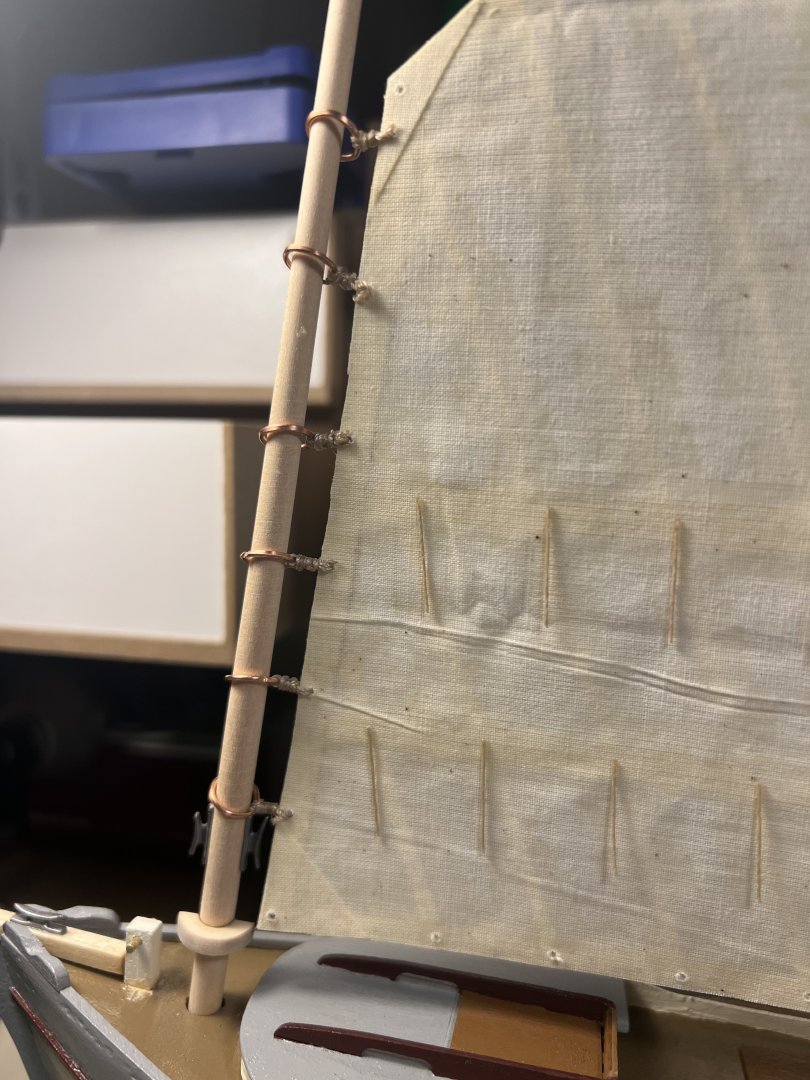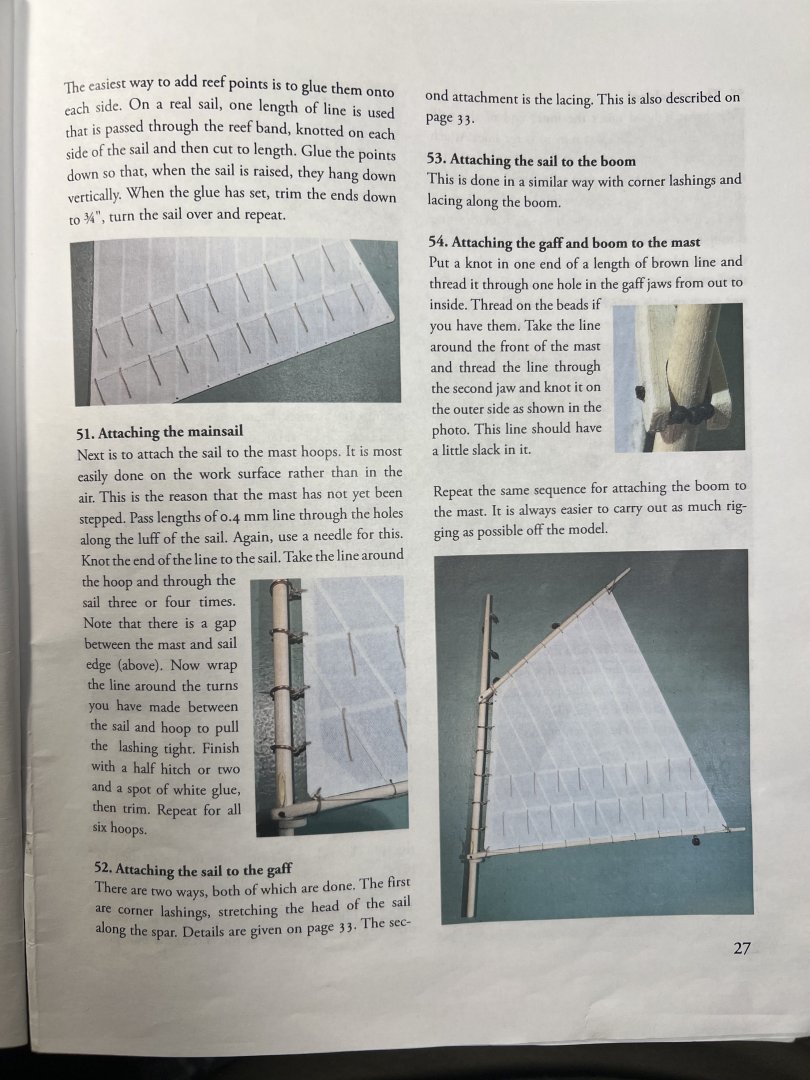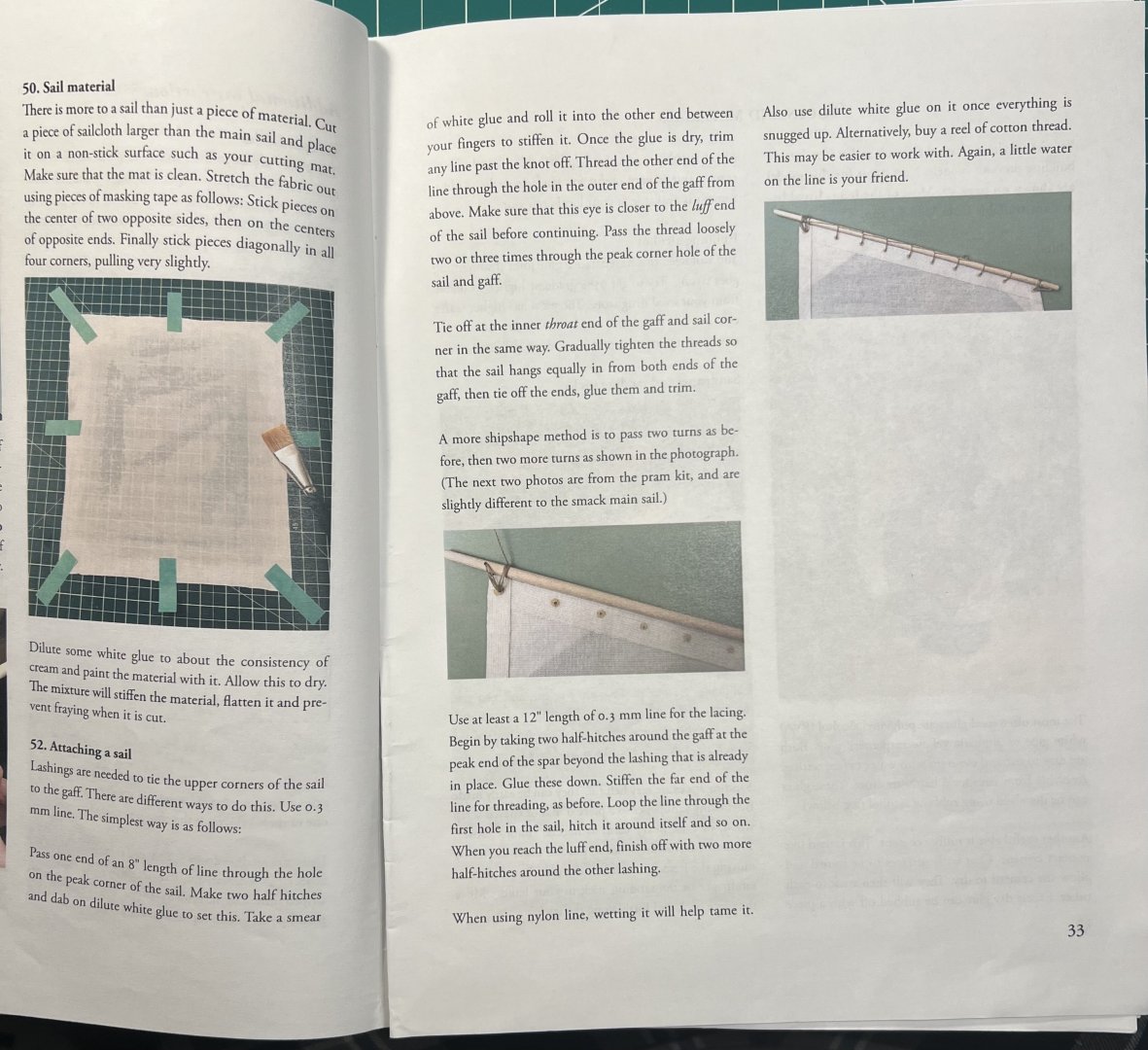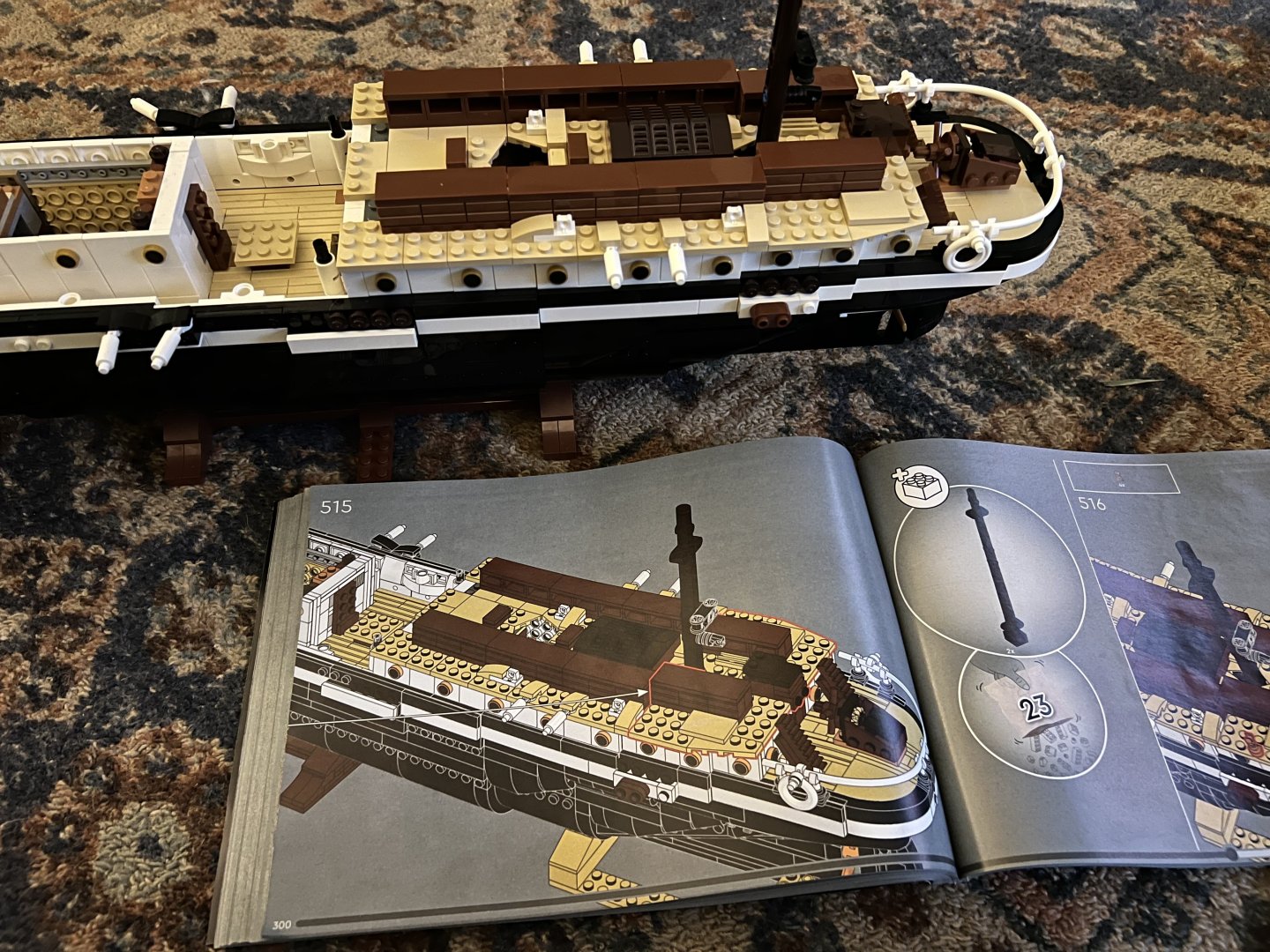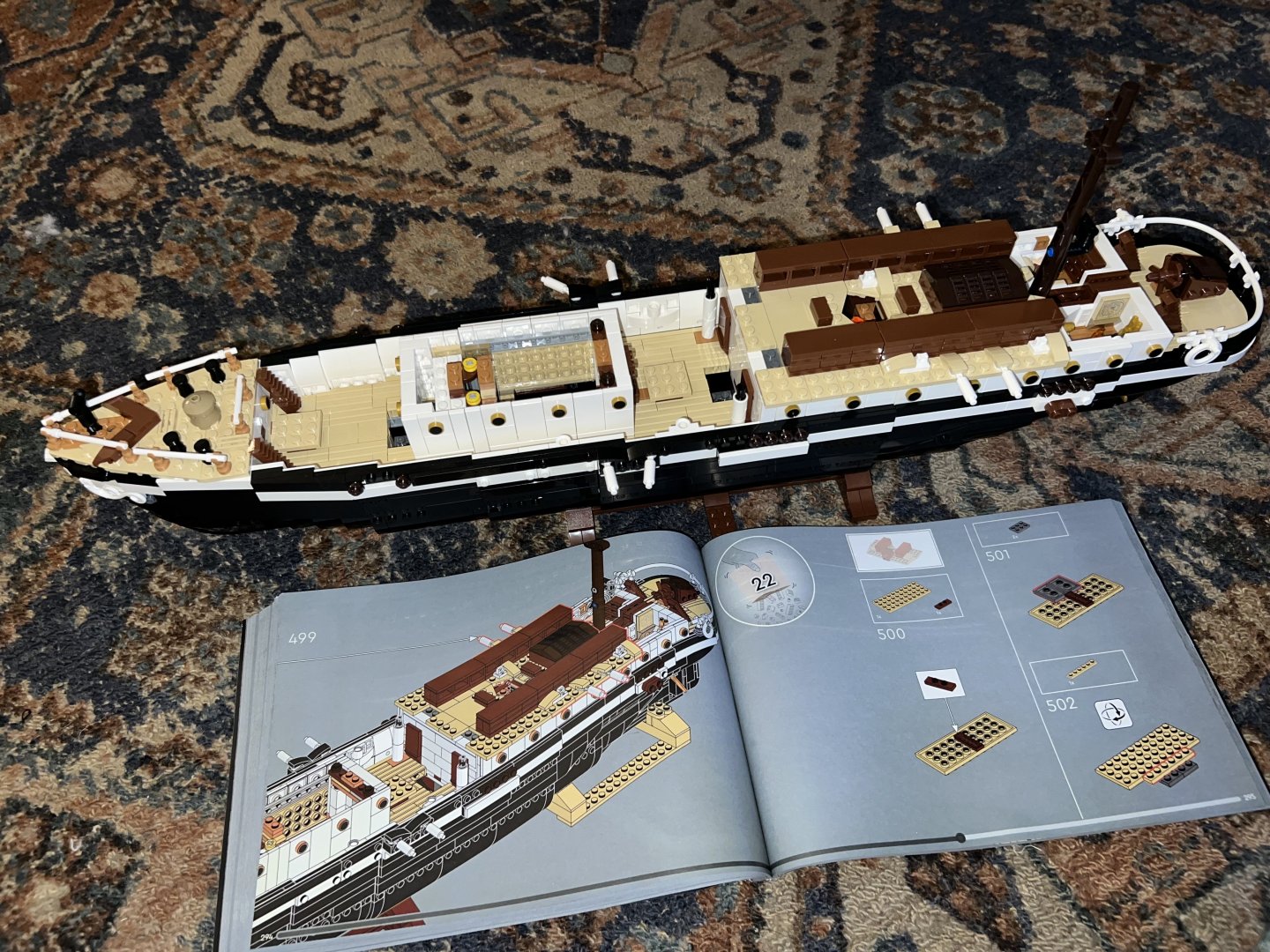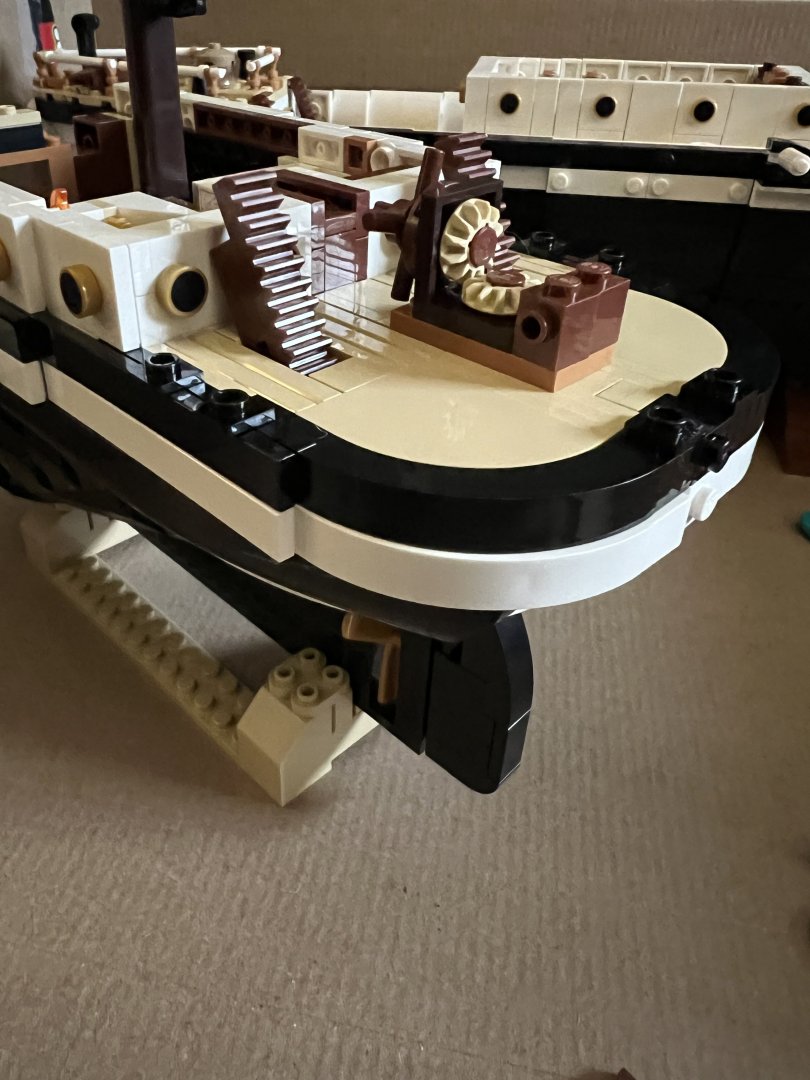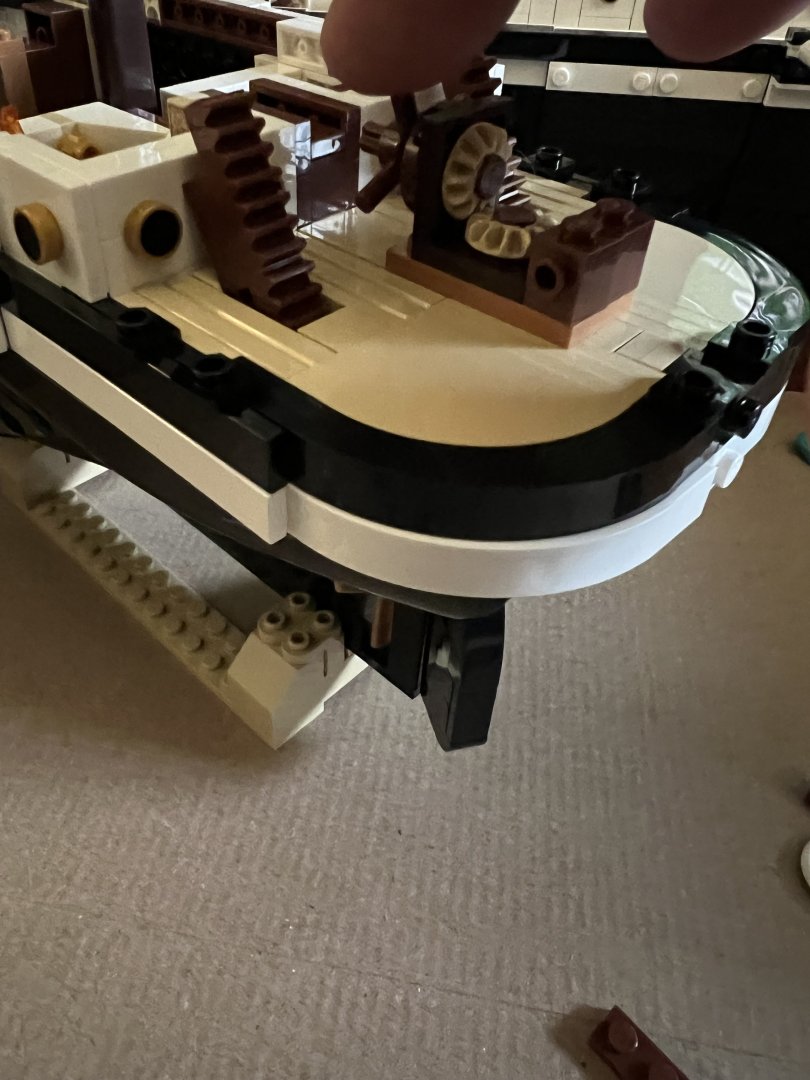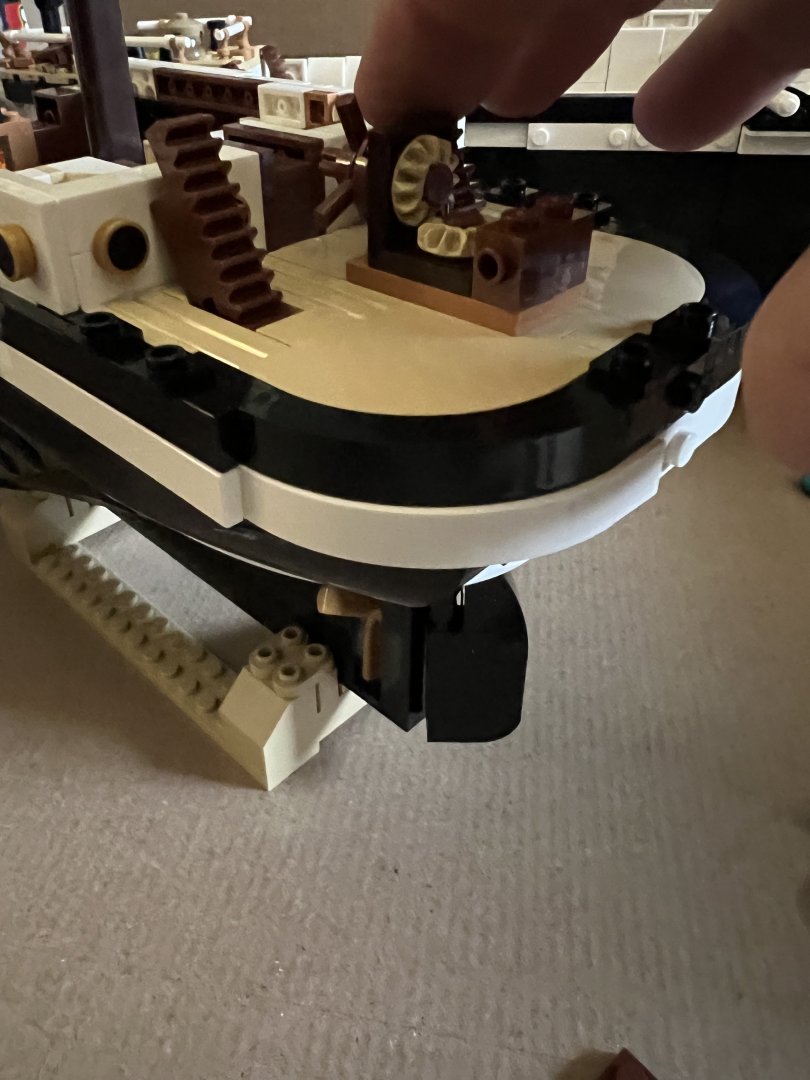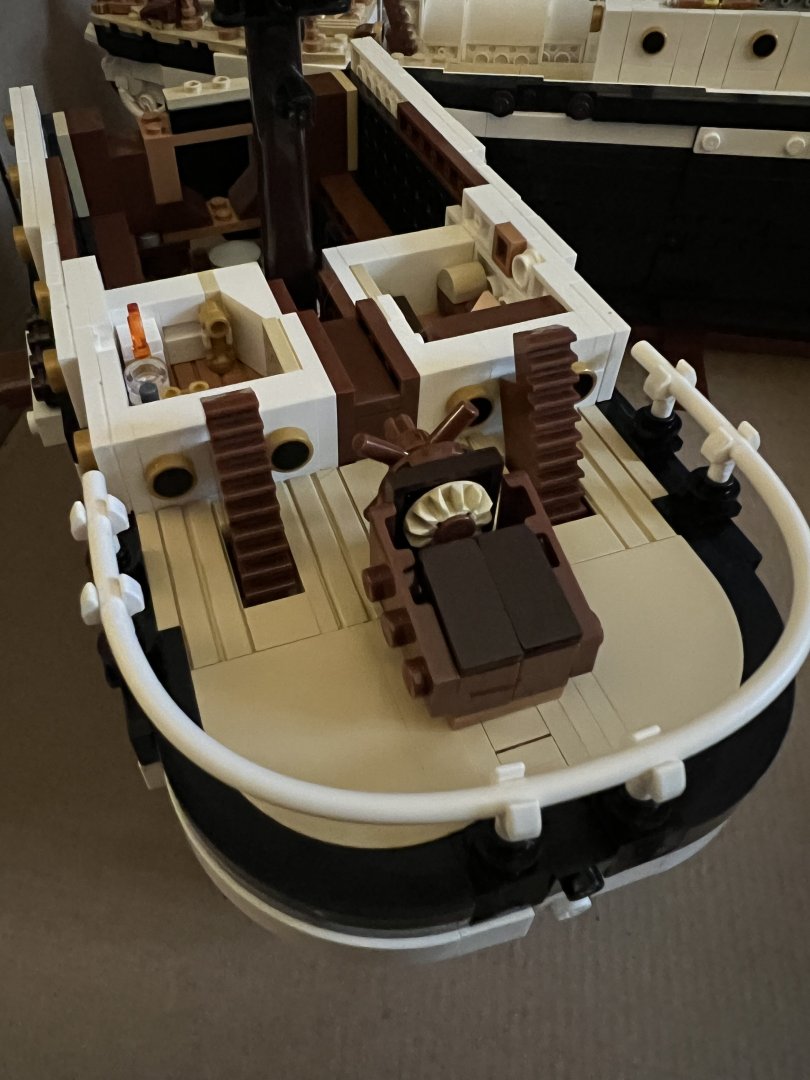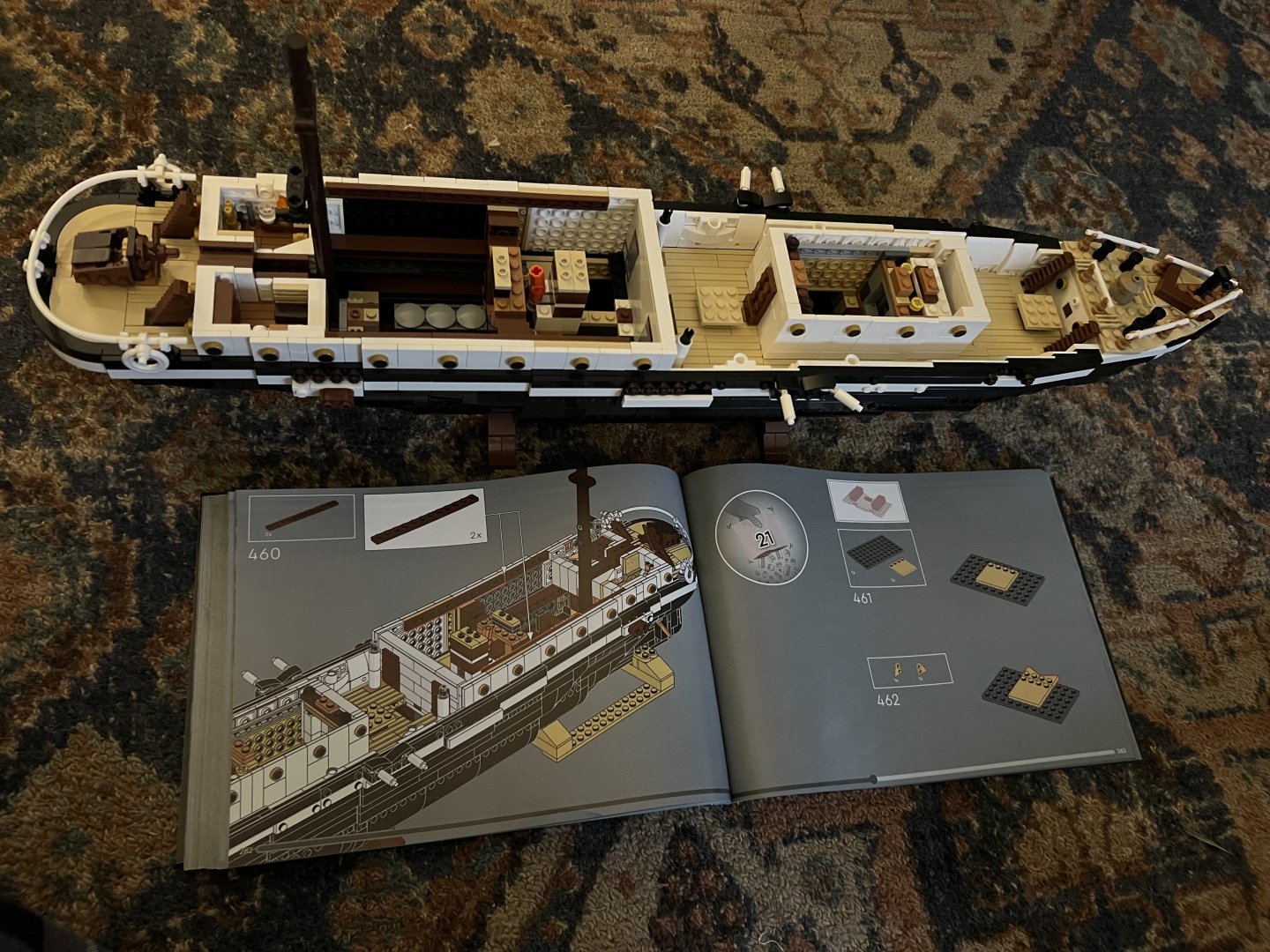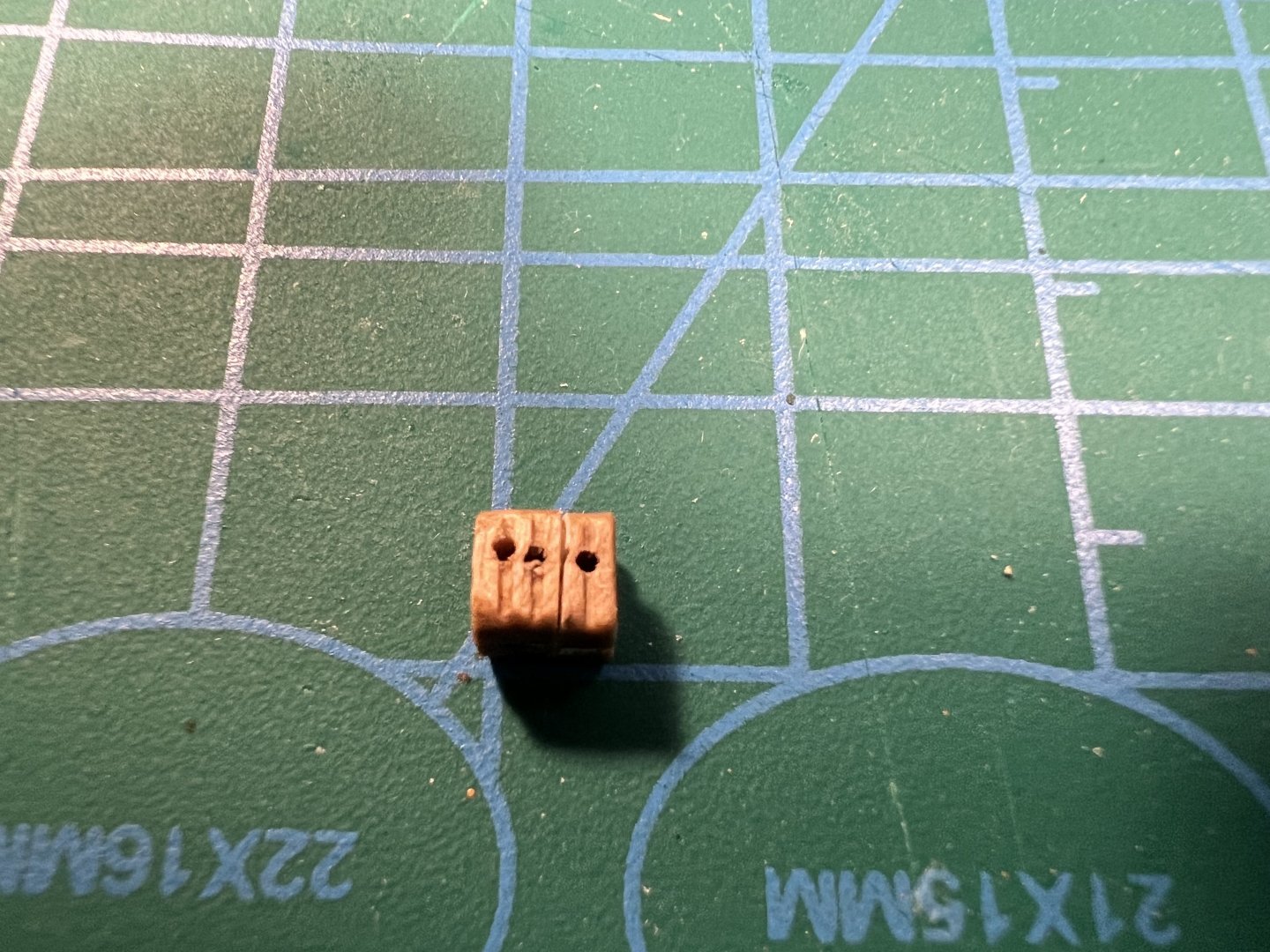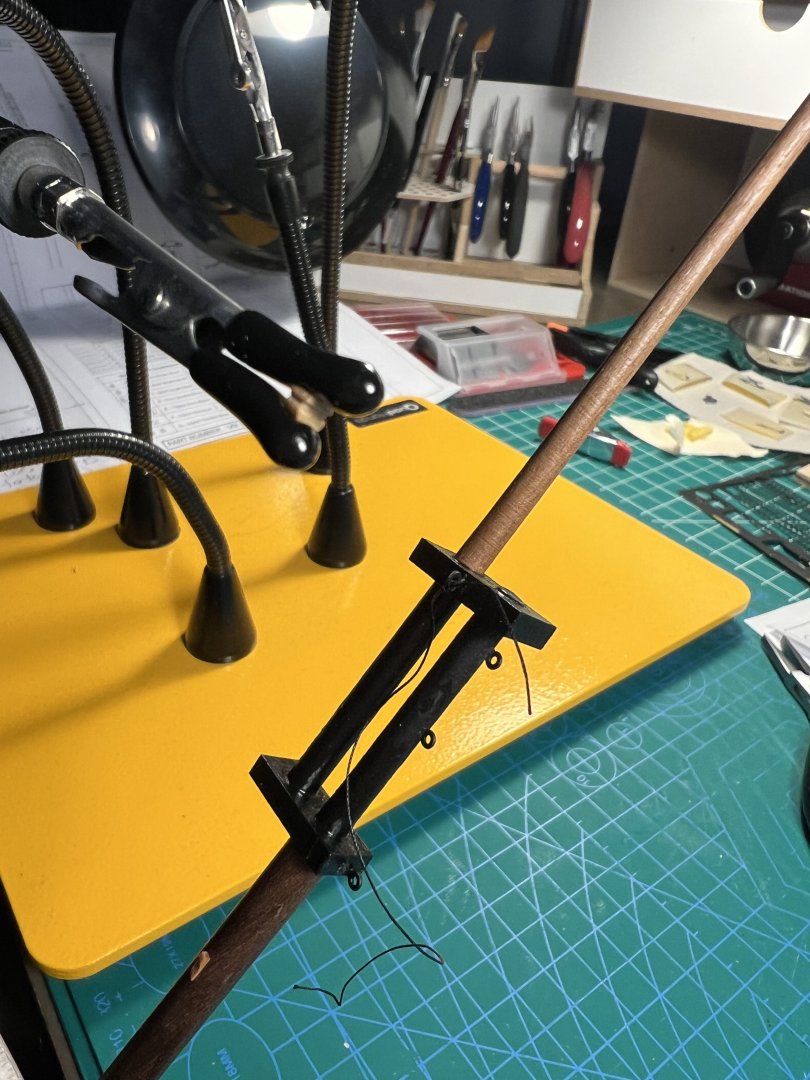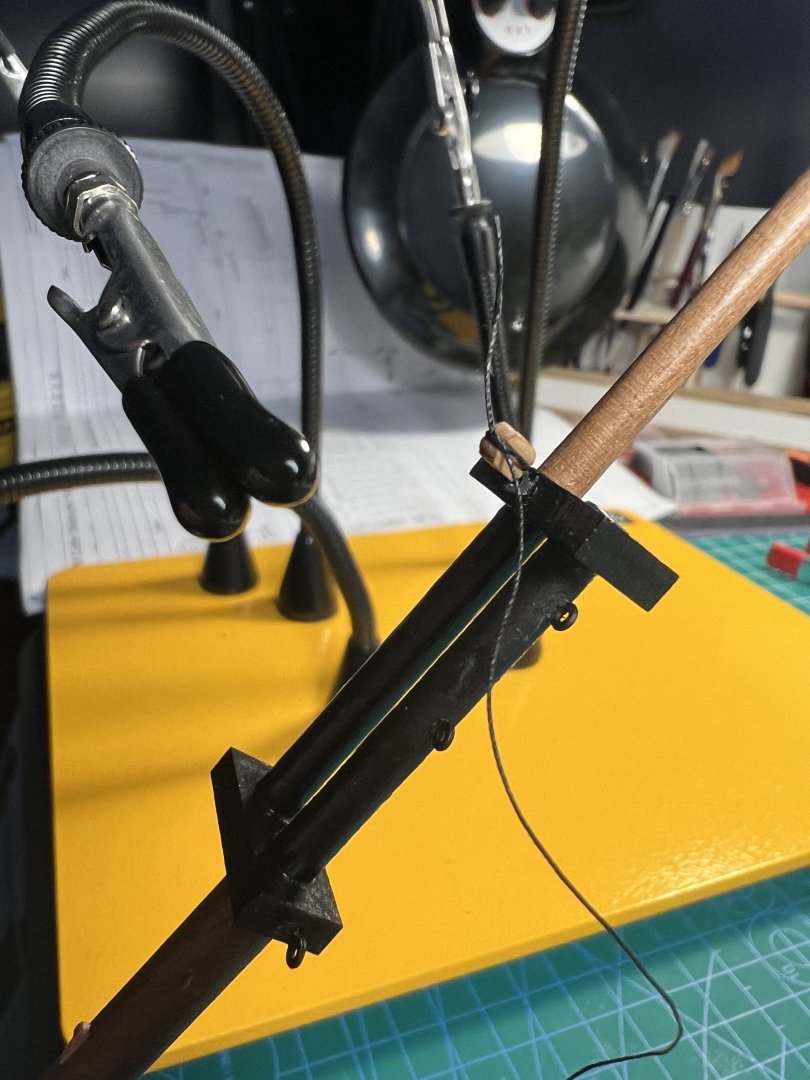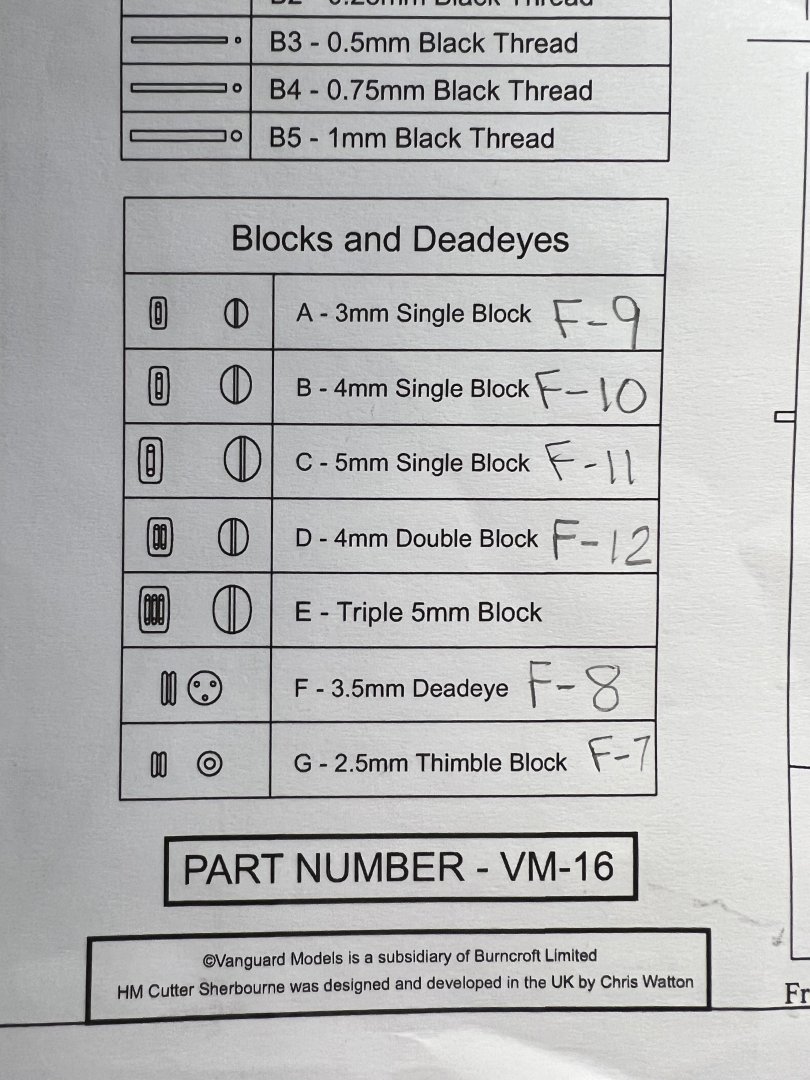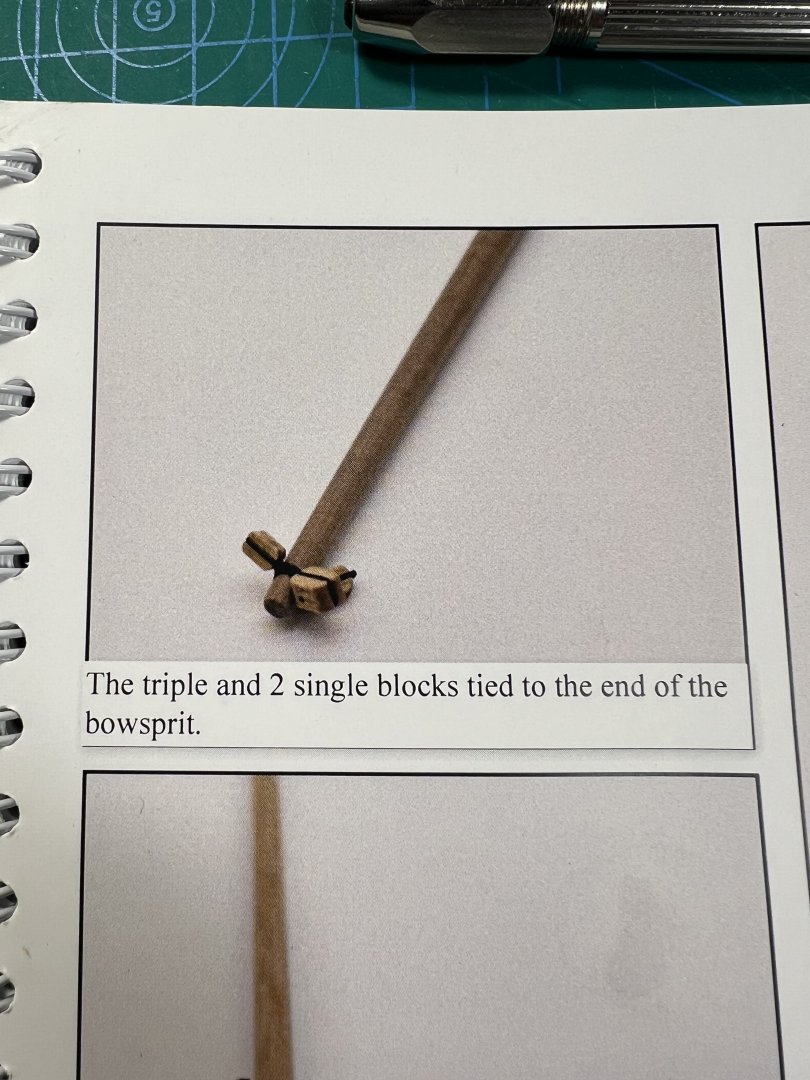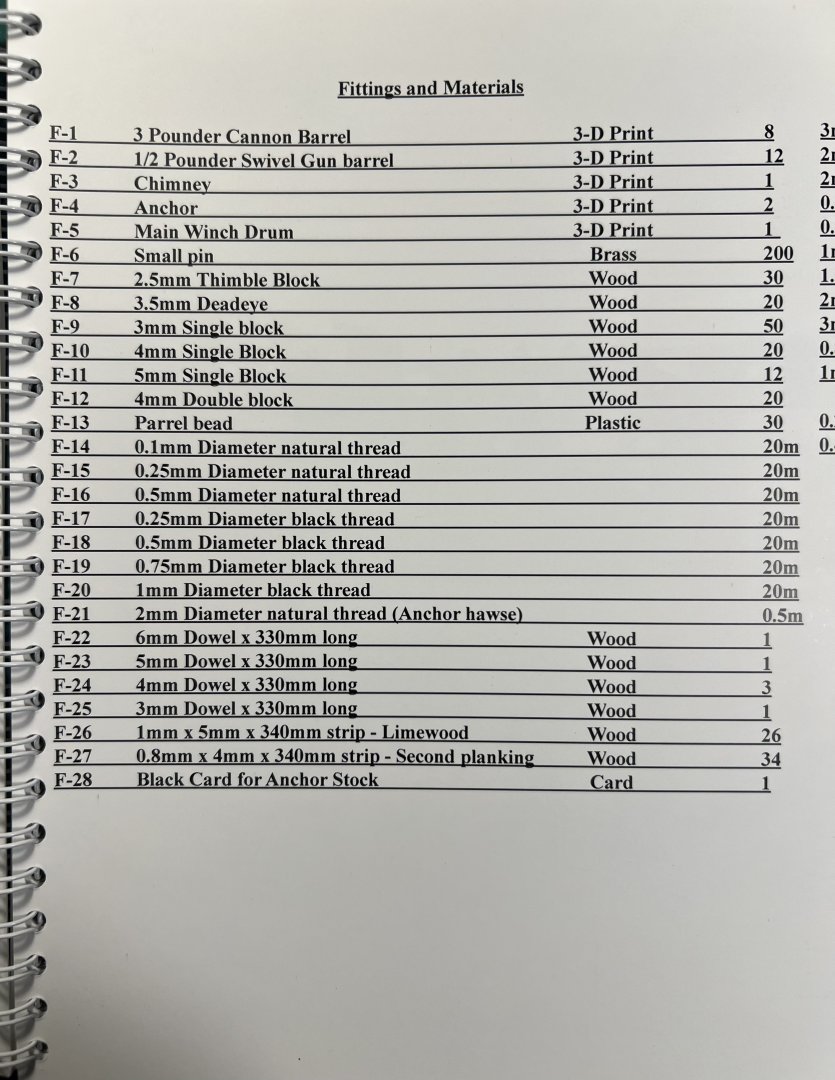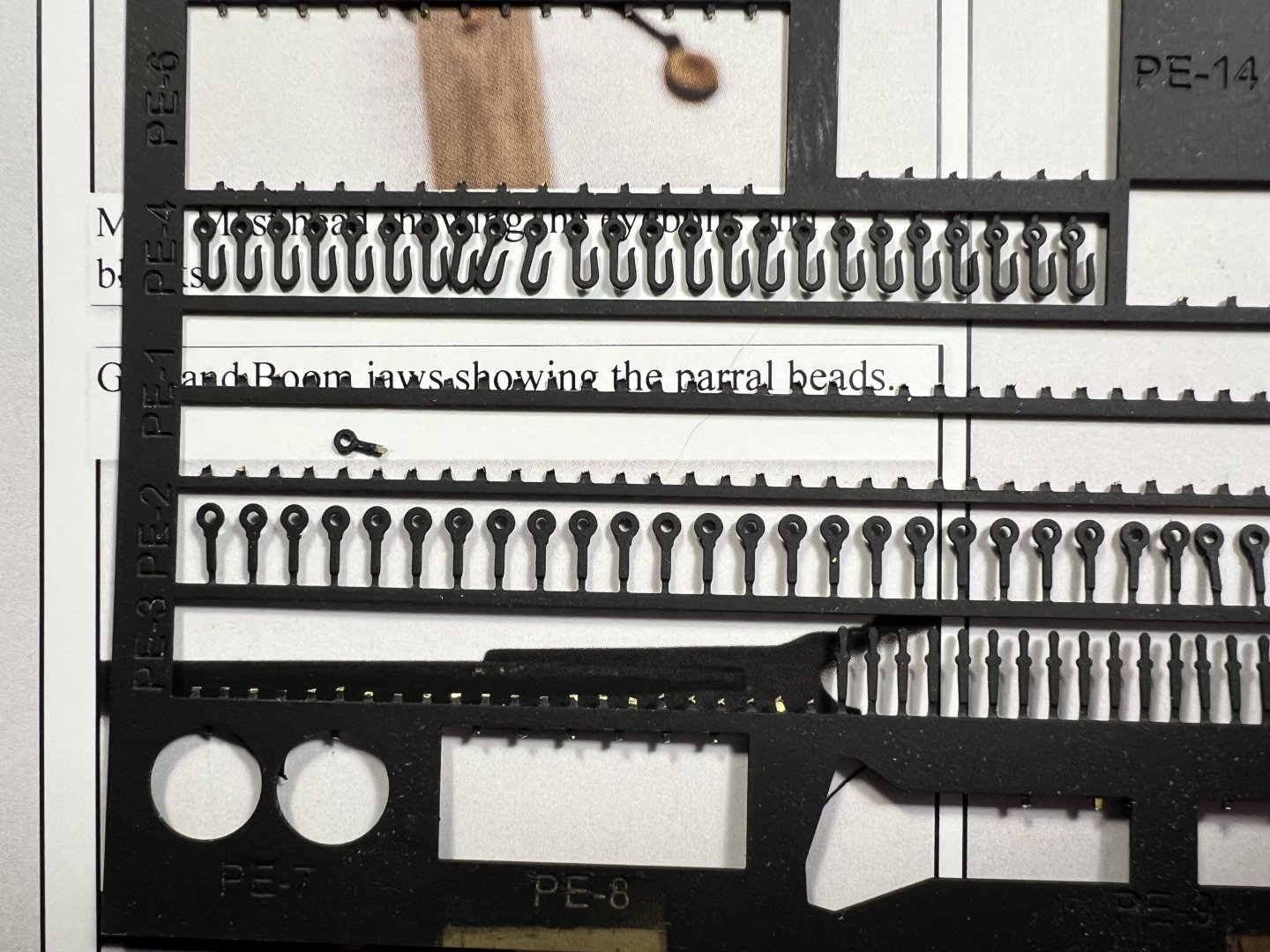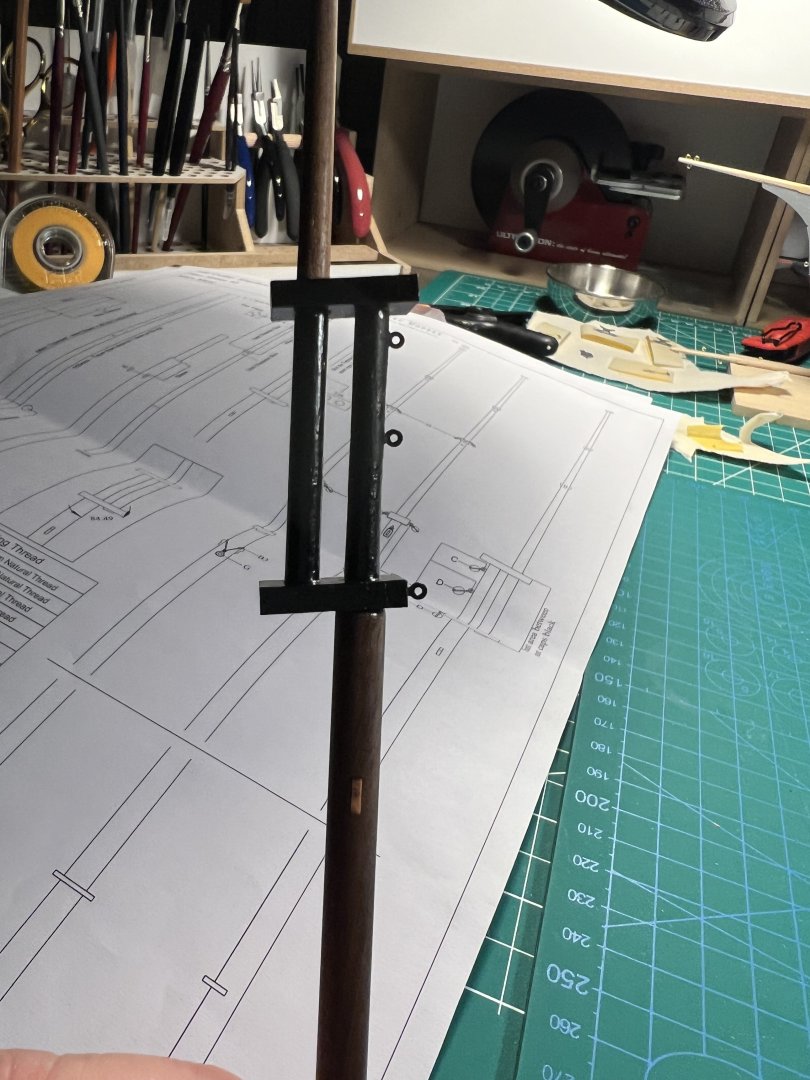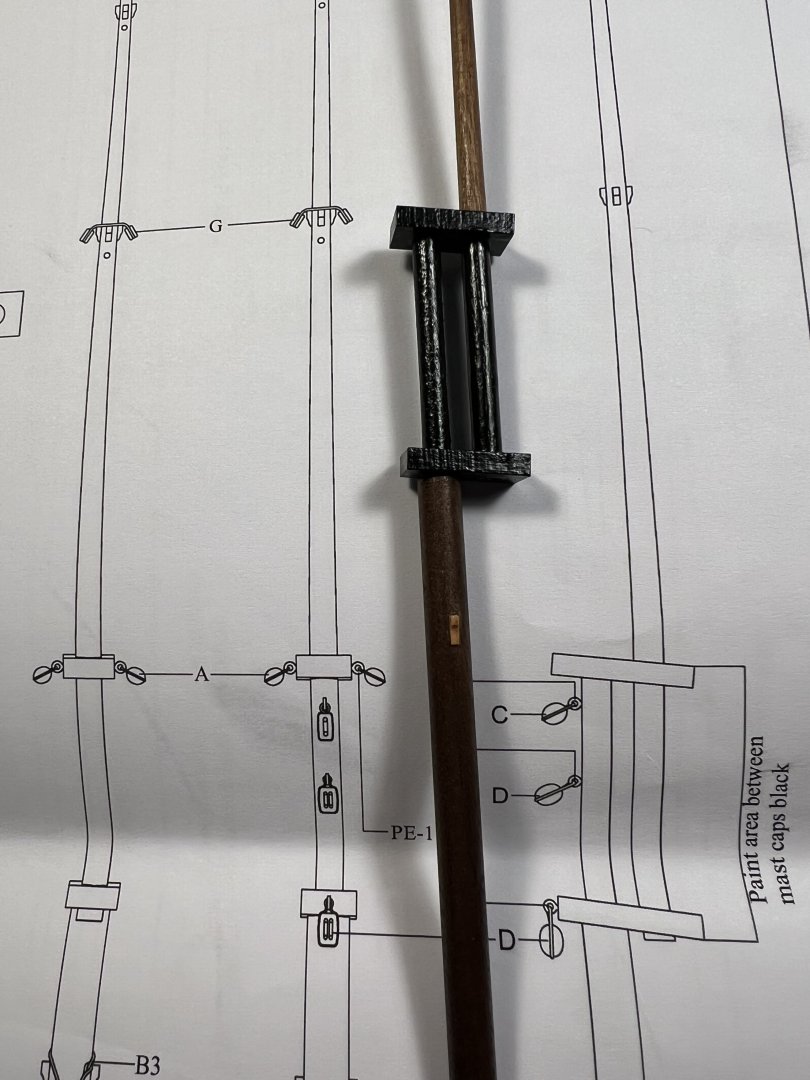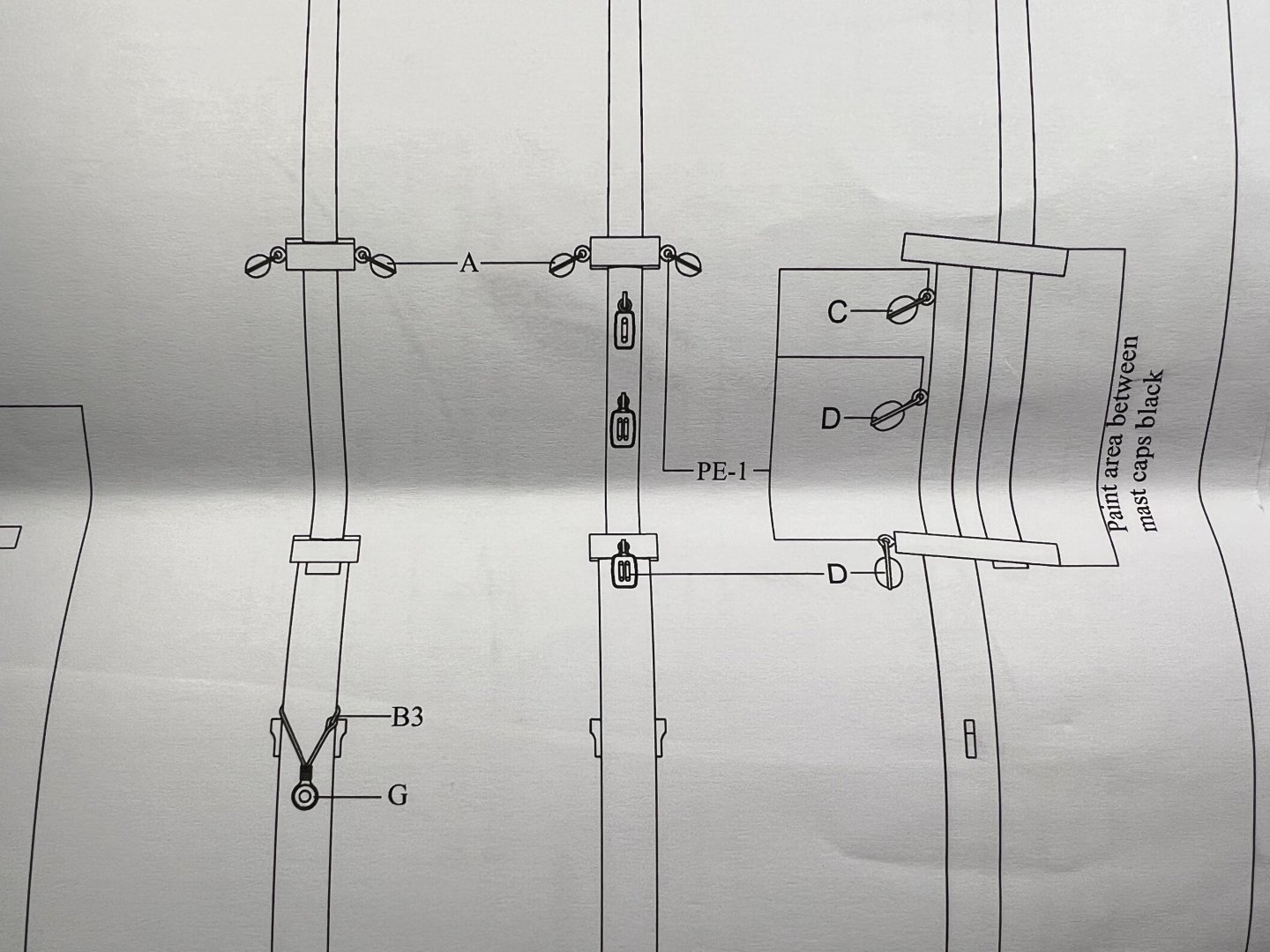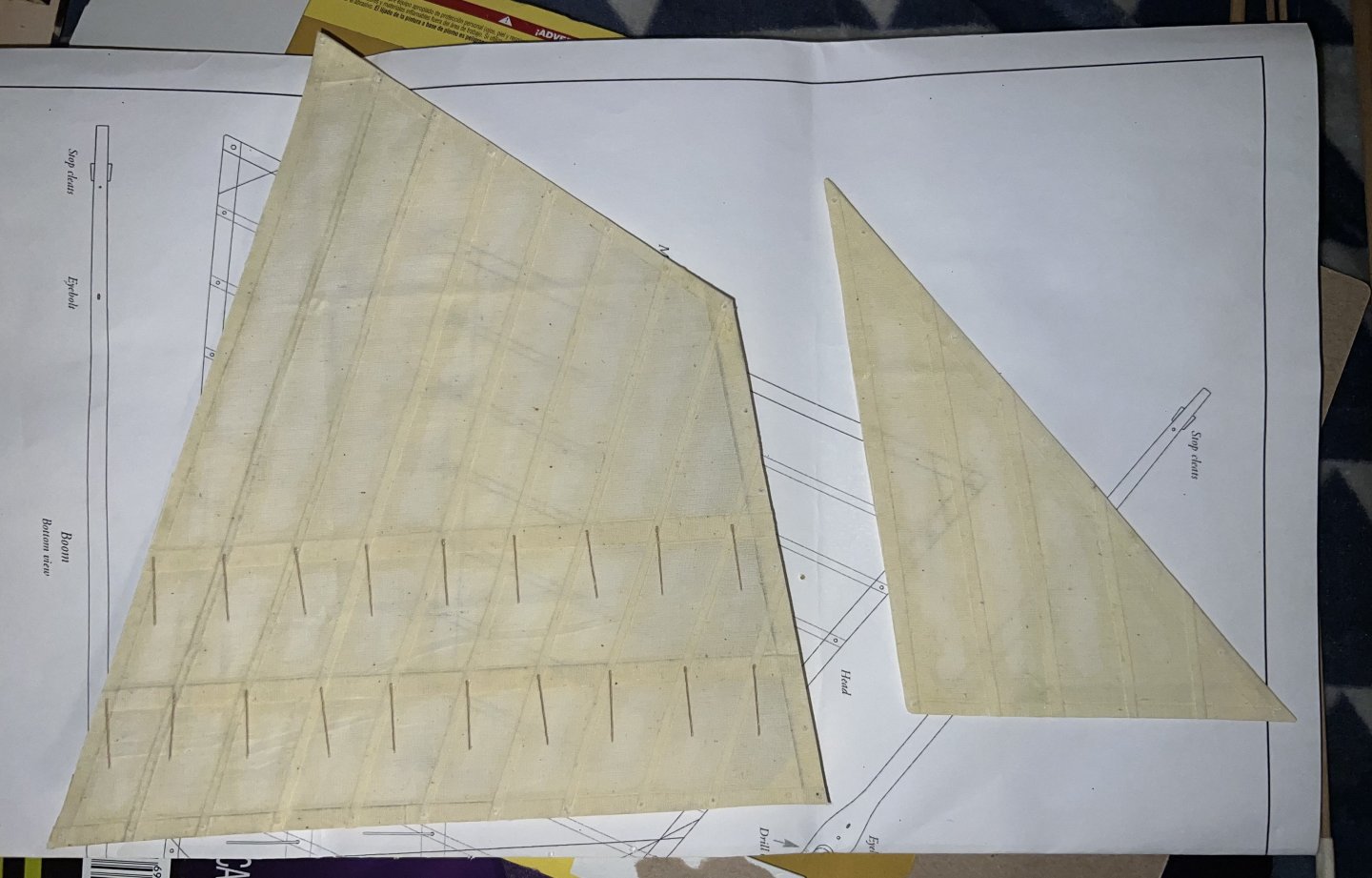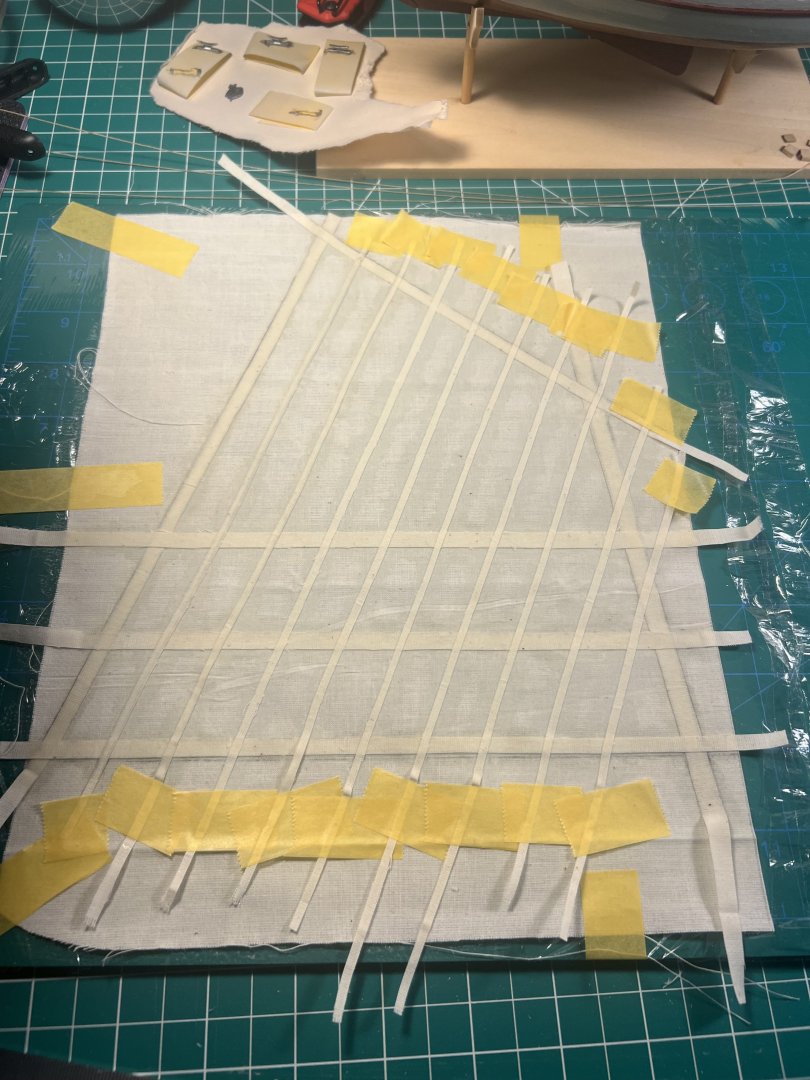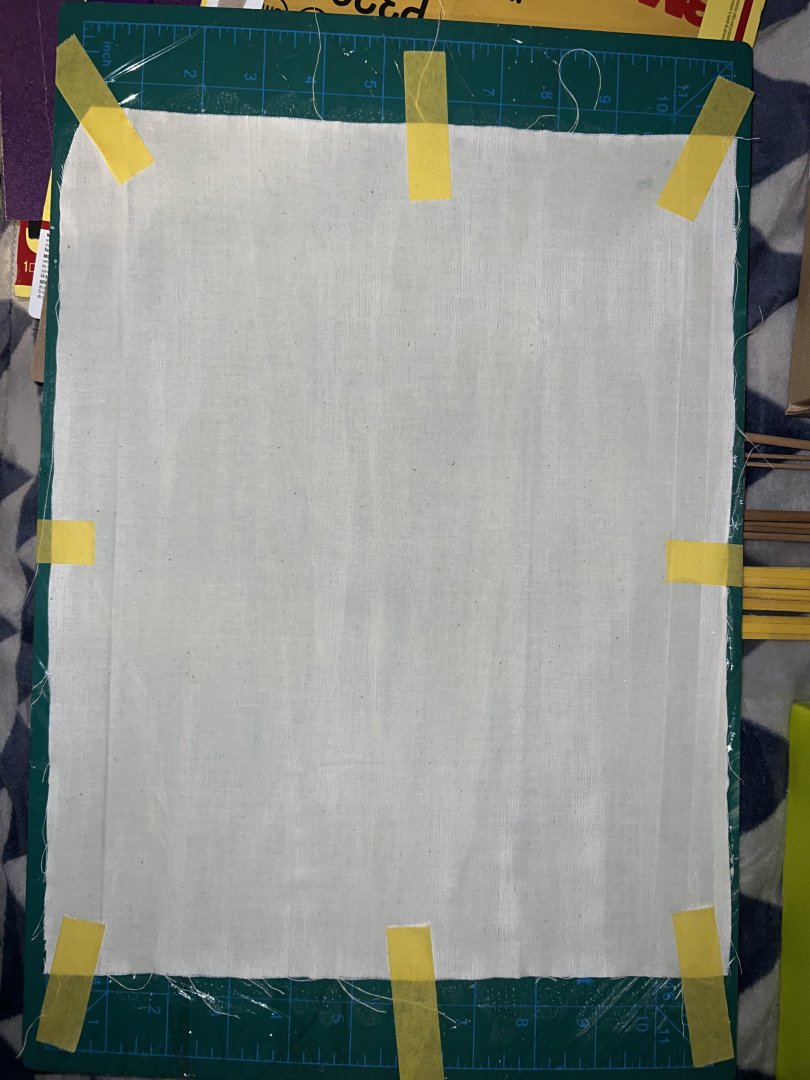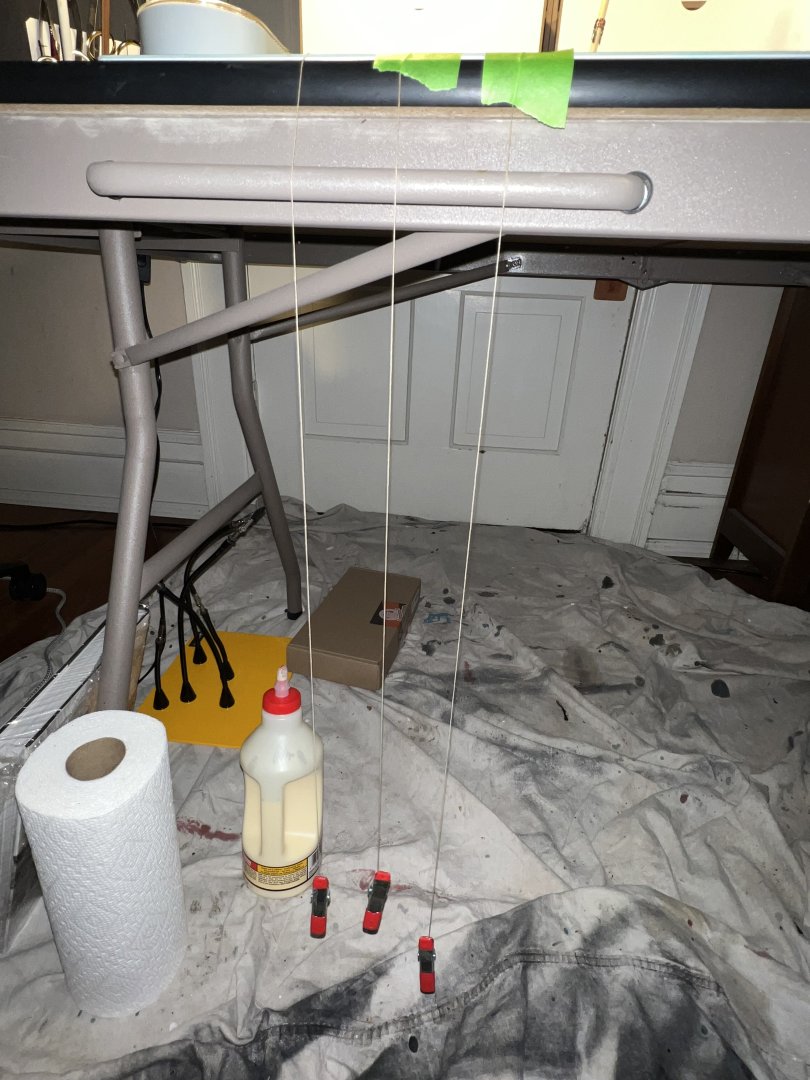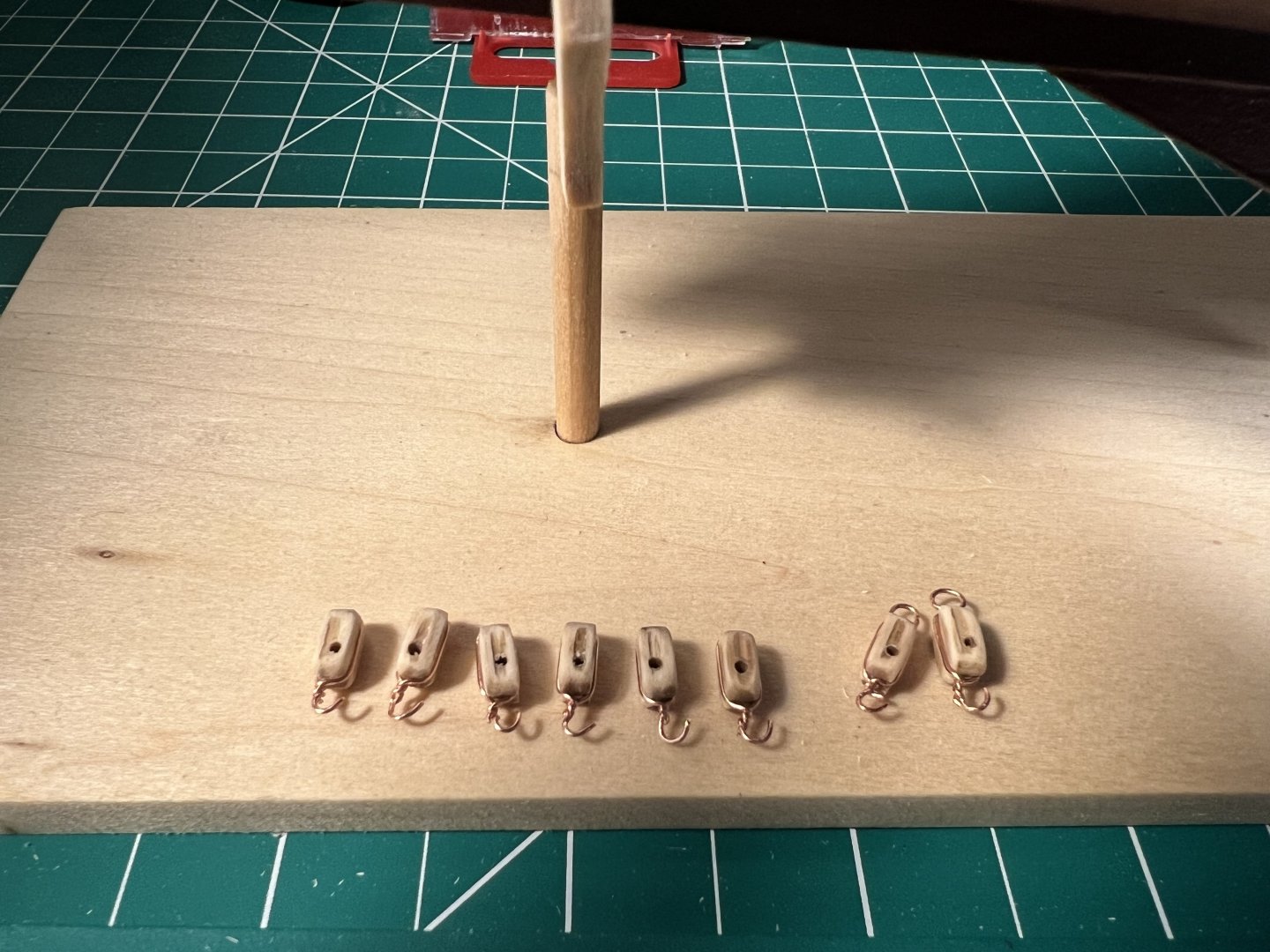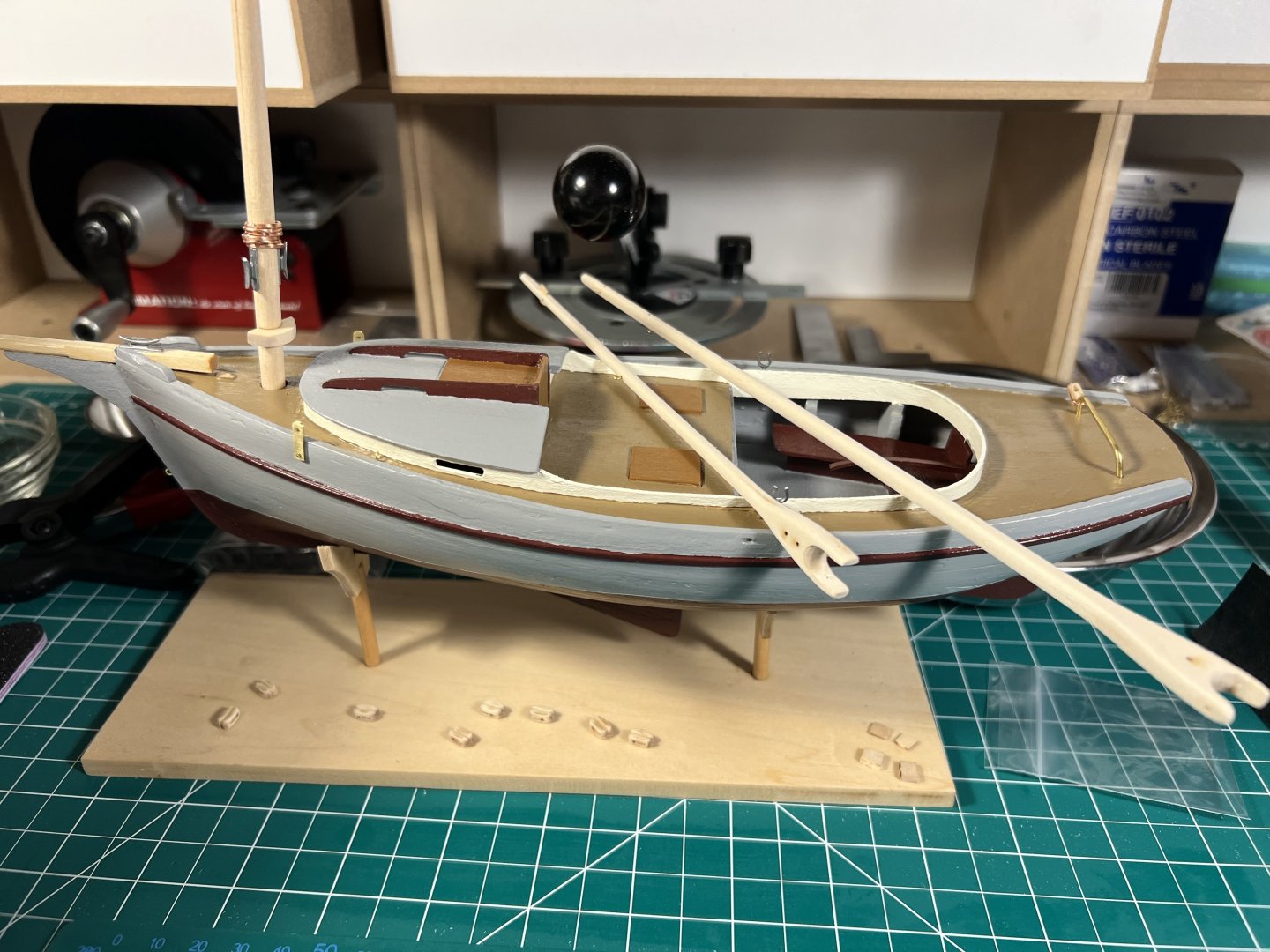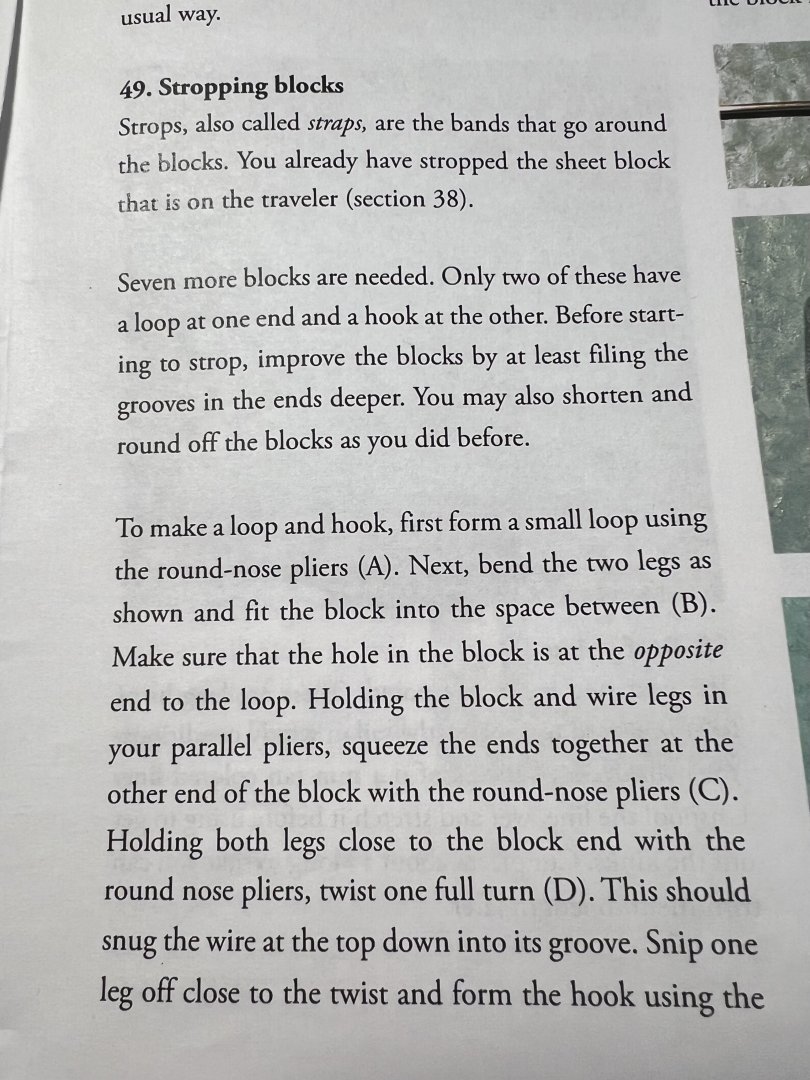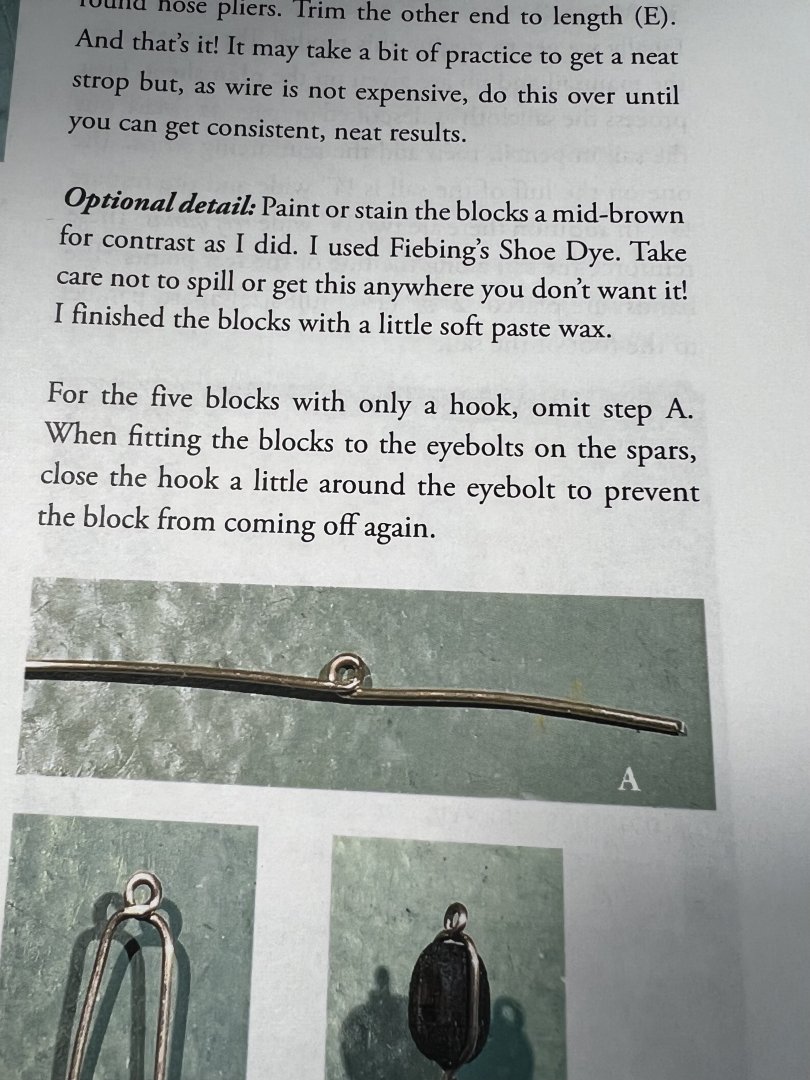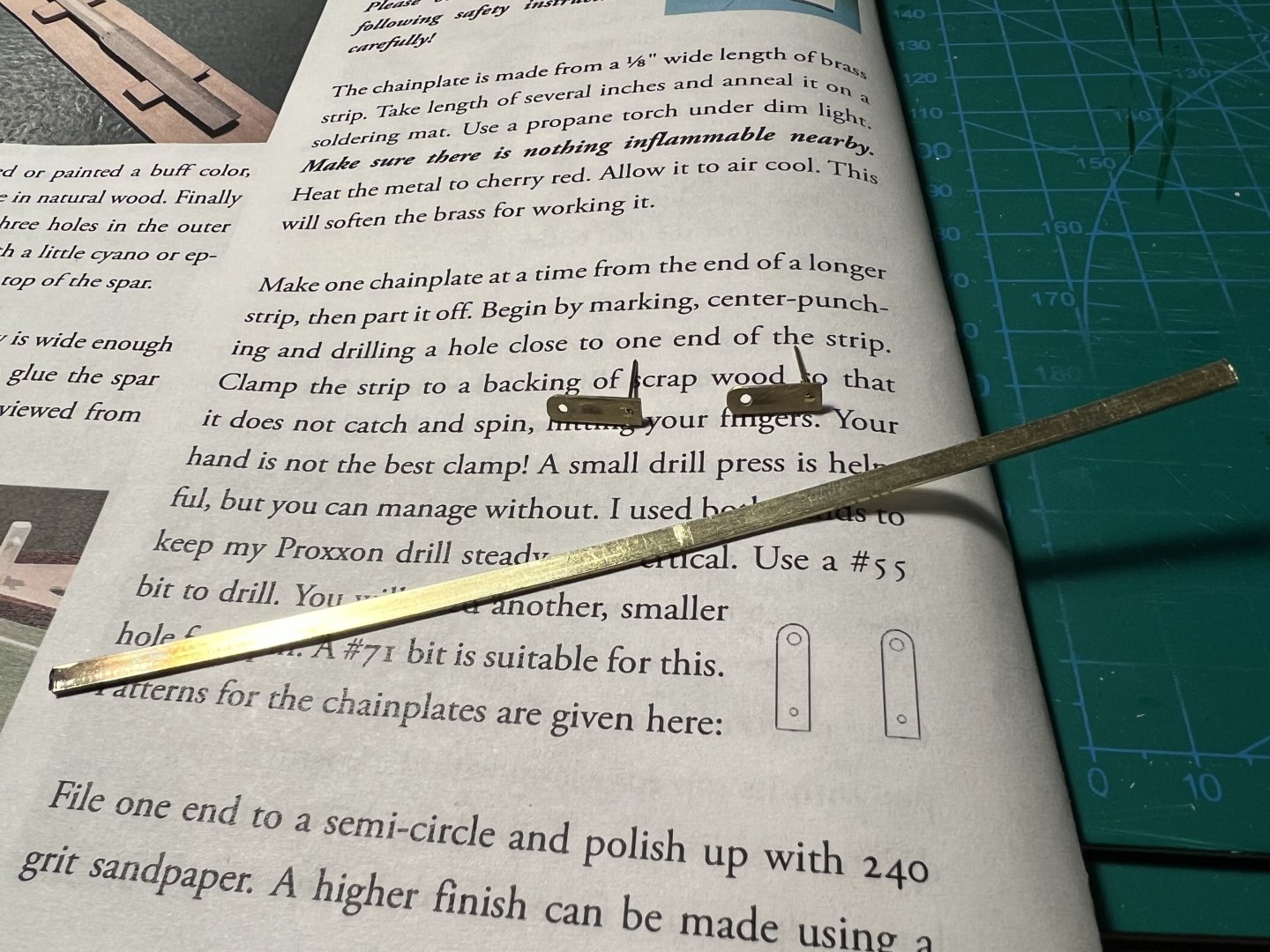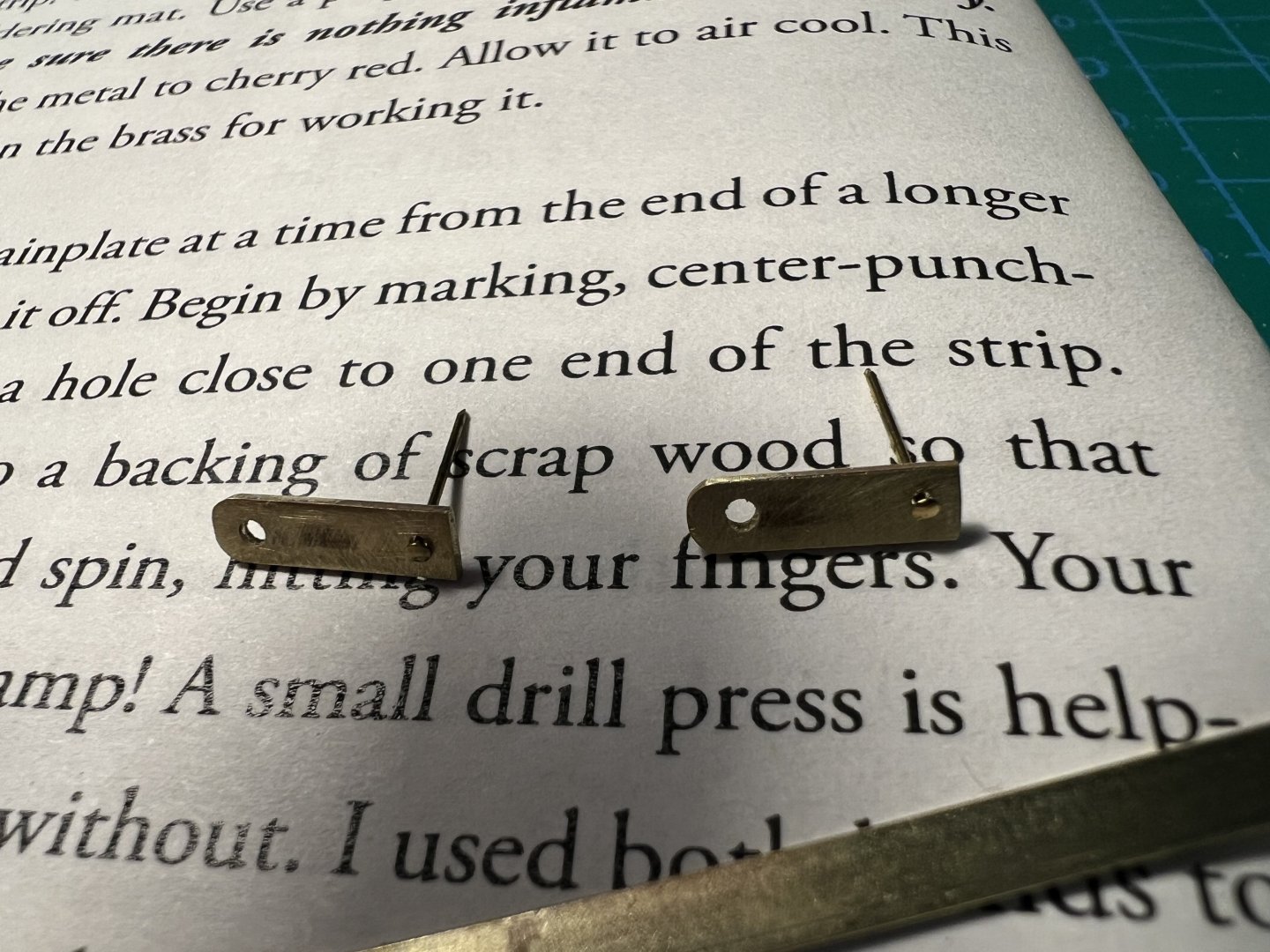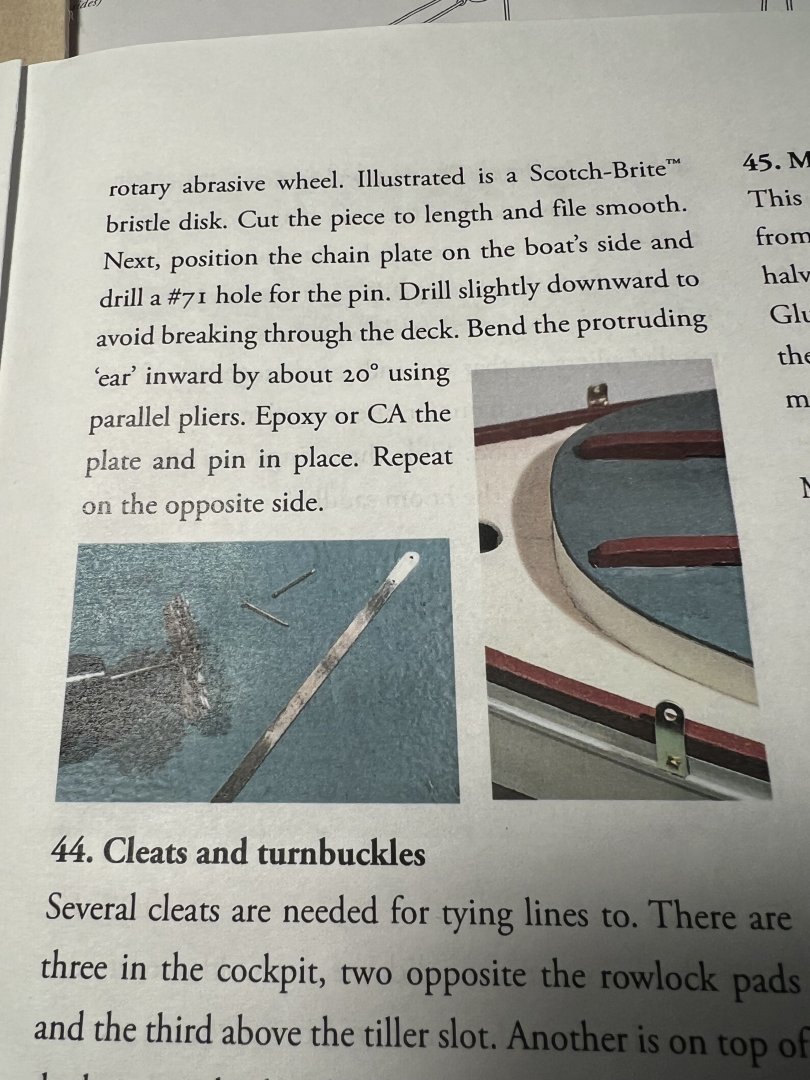
palmerit
NRG Member-
Posts
999 -
Joined
-
Last visited
Content Type
Profiles
Forums
Gallery
Events
Everything posted by palmerit
-
Starting to raise the sail. I think I understand what to do. I originally thread the halyard through both holes at the top of the mast then realized it went only through one. It seems odd to me that the halyard and downhaul lines are both secured on the same cleat. I would have thought there’d be separate cleats for separate lines.
- 63 replies
-
- Norwegian Sailing Pram
- Model Shipways
-
(and 2 more)
Tagged with:
-
Lashed and laced the top of the sail (still need to trim the ends of the lines after the Glenn put on them dries).
- 63 replies
-
- Norwegian Sailing Pram
- Model Shipways
-
(and 2 more)
Tagged with:
-
Take two making a sail for my Pram after getting a new sail from Model Expo. It took a couple email pokes, but it was finally shipped. Take one I made a couple mistakes. First, I used yellow PVA glue (did the same on my Smack) which naturally gave the sail a yellow tone. This time I used a white bookbinders glue. Second, I had taped my sail to my green cutting mat. It was clean but because it had been cut up a bit, some of the green stained sail. This go around, I put Saran Wrap down first. Tomorrow I’ll add the corner stays, and when they’re dried I’ll drill the holes for the line, and then try to figure out how to attach it. The instructions from the Pram are a bit more extensive than they were for the Smack but still not very clear.
- 63 replies
-
- Norwegian Sailing Pram
- Model Shipways
-
(and 2 more)
Tagged with:
-
I was able to attach the main sail to the main mast. But I was really struggling to figure out how to attach the sail to the gaff and the boom. The main instructions are pretty spartan. The appendix explanations are incomplete. They kind of describe the lashings. But don’t describe the lacing. Then I looked at the instructions for my Pram. I hadn’t finished that yet because I was waiting for a new piece of sail material to arrive from Model Expo. It just arrived today. I looked back at the instructions for the Pram and the description of how to add the sail were much more complete. Now that I have a new sail, I’ll finish the Pram, then turn to the Smack.
- 59 replies
-
- muscongus bay lobster smack
- Model Shipways
- (and 2 more)
-
Kit review 1:25 Drakkar ‘Oseberg’ V3 - Ships of Pavel Nikitin
palmerit replied to James H's topic in REVIEWS: Model kits
Maybe not surprising that dry dock models and parts (on the MSW banned list) sells this kit for *more* than what it would cost to buy directly from Pavel Nikitin and pay the shipping fee from Ukraine.- 14 replies
-
- Pavel Nikitin
- viking
-
(and 2 more)
Tagged with:
-
Kit review 1:25 Drakkar ‘Oseberg’ V3 - Ships of Pavel Nikitin
palmerit replied to James H's topic in REVIEWS: Model kits
Very cool. Who sells this in the US?- 14 replies
-
- Pavel Nikitin
- viking
-
(and 2 more)
Tagged with:
-
- 177 replies
-
- Sherbourne
- vanguard models
-
(and 3 more)
Tagged with:
-
The Quad Hands really make it easier (far easier) to rig the blocks. I was trying to tie in the block without using them and failing completely until I pulled out the Quad Hands. I’m guessing there’s a way to do this without them but I couldn’t figure it out.
- 177 replies
-
- Sherbourne
- vanguard models
-
(and 3 more)
Tagged with:
-
The plans and instructions have a triple 5mm block that goes on the bowsprit. I can’t seem to find it. I think there’s only one needed.
- 177 replies
-
- Sherbourne
- vanguard models
-
(and 3 more)
Tagged with:
-
Another thing I’m unsure about is what to do with the PE-2 eyebolts (they’re larger than the PE-1 eyebolts that I used in lots of places in the kit). I’ve yet to use a PE-2. I must have missed where. I don’t think I have enough of the PE-1 to add eyebolts to the main mast. I lost a couple PE-1 eyebolts (they’re small and can fling off a set of tweezers). I don’t know if I missed where I was supposed to use the larger PE-2. There are a bunch of them. I’ll probably need to use the larger PE-2 on the mast. I ended up using the PE-2 eyebolts.
- 177 replies
-
- Sherbourne
- vanguard models
-
(and 3 more)
Tagged with:
-
Finally starting to do the rigging. I need to add eyelets to the main mast. Should I assume that the eyelets marked A that are attached to the sides of the upper rectangular mast cap would go in the middle of the mast cap? The plans show where they are located on the front and rear view but don’t show their position on the side view.
- 177 replies
-
- Sherbourne
- vanguard models
-
(and 3 more)
Tagged with:
-
- 59 replies
-
- muscongus bay lobster smack
- Model Shipways
- (and 2 more)
-
- 59 replies
-
- muscongus bay lobster smack
- Model Shipways
- (and 2 more)
-
Preparing the sail. Painted it after taping it with a slurry of glue and water to stiffen the fibers. Because with my Pram my smaller cutting mat left green stains on the sail (Model Expo is sending a new one), before I taped this one down, I put down some plastic (Saran) wrap taped around the mat. I hope that works better. The reef points are short lengths of line that will be glued to the sails. To stiffen them, I cut some lengths of line, painted them with the slurry, and hung them from my table, using some clips to weight them. We’ll see how they are tomorrow evening.
- 59 replies
-
- muscongus bay lobster smack
- Model Shipways
- (and 2 more)
-
- 59 replies
-
- muscongus bay lobster smack
- Model Shipways
- (and 2 more)
-
- 59 replies
-
- muscongus bay lobster smack
- Model Shipways
- (and 2 more)
-
The instructions for the blocks were a little confusing. Early in the instructions, it says “only two of these have a loop at one end and a hook at the other”. On first reading, I thought only two have hooks since the previous strops I had made (for the Pram and Smack) had loops. But then later in the next column it said “for the five blocks with only a hook …” so clearly, there are two blocks with a loop and a hook and five blocks with only a hook.
- 59 replies
-
- muscongus bay lobster smack
- Model Shipways
- (and 2 more)
-
Making the small chainplates for the backstays was a new challenge. The kit supplies a somewhat thick “strip” of brass that I first drilled two holes in (on the strip). I regularly heated (with a long lighter) the end I was working on, but it still took a while to drill through with my pin vise. I then drilled the top hole again with a wider drill bit. Then attached the strip in my vise to shape them half round at the top, and then cut to length in my mini miter box. I filed the cut. Then sanded with fine grit sandpaper to remove the oxidation from heating the metal. The kits came with pins (for the bottom smaller hole) but I’m using the pins that came with my Sherbourne (they’re thinner and the same color of brass).
- 59 replies
-
- muscongus bay lobster smack
- Model Shipways
- (and 2 more)
-
Art supply stores will often have a variety of basswood sheets and dowels too (I go to the locally-owned one frequented by art students in the local colleges, but I imagine that a place like Michael's or maybe Hobby Lobby (in the US) might have them too). I've seen a bunch of basswood (and balsa wood) on Amazon too. If you ever need a wood (in strips and sheets in various model-sized dimensions) other than basswood for a future model, there are a few places you can order them from. I had to replace a walnut dowel for a Vanguard model and I ordered it from agesofsail.com (they have wood from the same supplier - I think Occre - that Vanguard sources from). I ordered some wood from Model Expo (as part of another order) but it wasn't as nice as the wood from https://www.modelerssawmill.com (which is what Syren Ship Model Company recommends). I'm sure others have other recommendations.
- 81 replies
-
- Norwegian Sailing Pram
- Model Shipways
-
(and 1 more)
Tagged with:
About us
Modelshipworld - Advancing Ship Modeling through Research
SSL Secured
Your security is important for us so this Website is SSL-Secured
NRG Mailing Address
Nautical Research Guild
237 South Lincoln Street
Westmont IL, 60559-1917
Model Ship World ® and the MSW logo are Registered Trademarks, and belong to the Nautical Research Guild (United States Patent and Trademark Office: No. 6,929,264 & No. 6,929,274, registered Dec. 20, 2022)
Helpful Links
About the NRG
If you enjoy building ship models that are historically accurate as well as beautiful, then The Nautical Research Guild (NRG) is just right for you.
The Guild is a non-profit educational organization whose mission is to “Advance Ship Modeling Through Research”. We provide support to our members in their efforts to raise the quality of their model ships.
The Nautical Research Guild has published our world-renowned quarterly magazine, The Nautical Research Journal, since 1955. The pages of the Journal are full of articles by accomplished ship modelers who show you how they create those exquisite details on their models, and by maritime historians who show you the correct details to build. The Journal is available in both print and digital editions. Go to the NRG web site (www.thenrg.org) to download a complimentary digital copy of the Journal. The NRG also publishes plan sets, books and compilations of back issues of the Journal and the former Ships in Scale and Model Ship Builder magazines.

